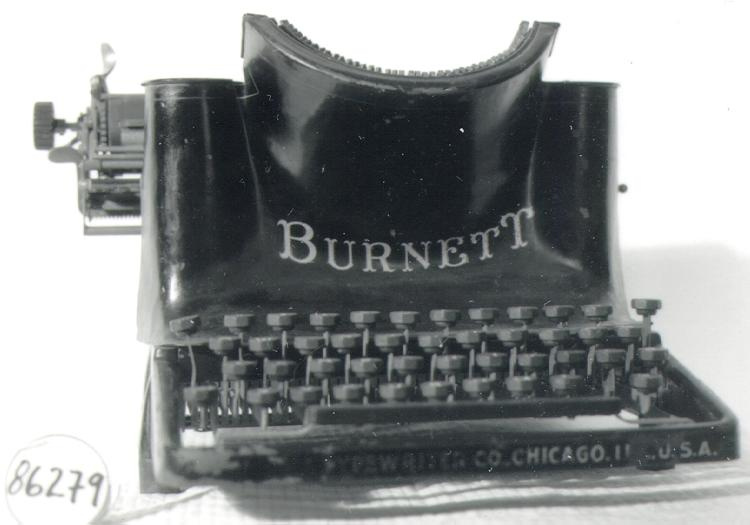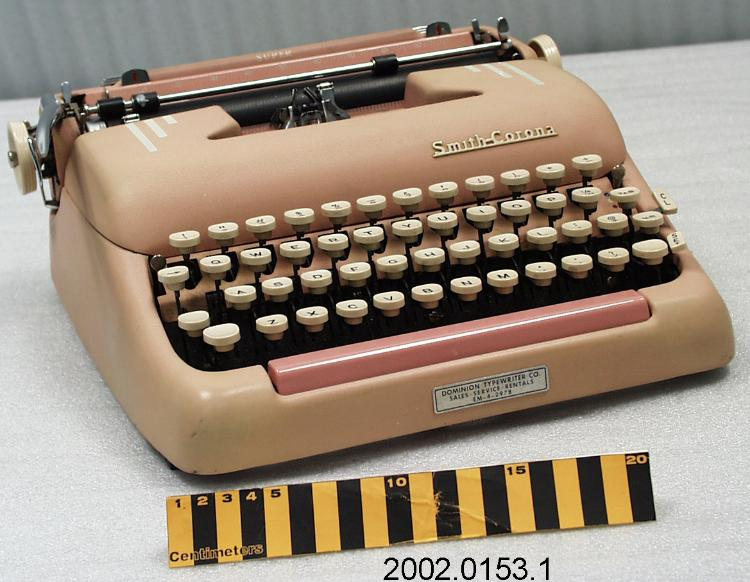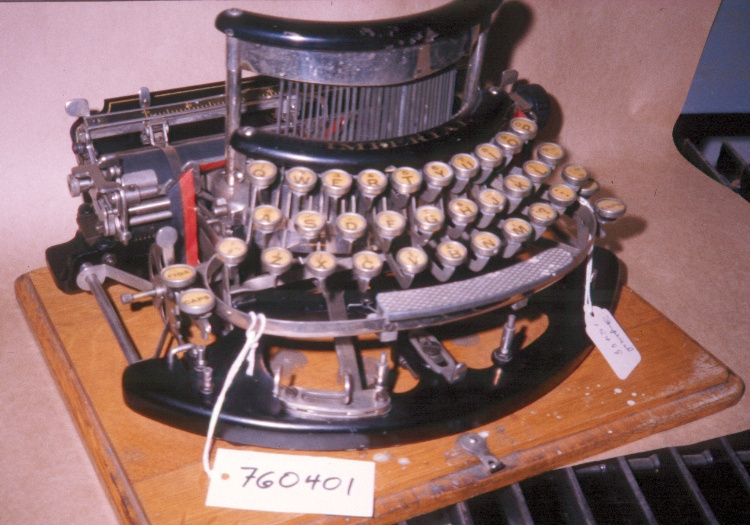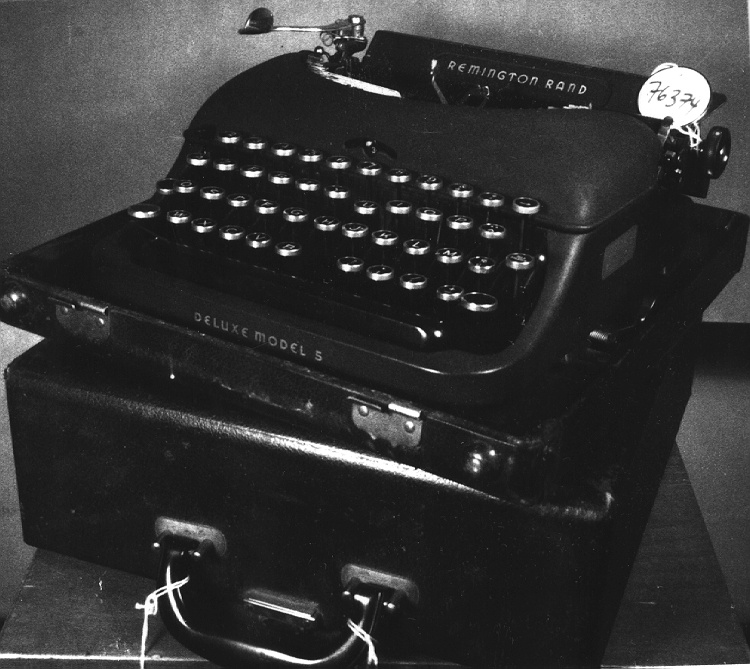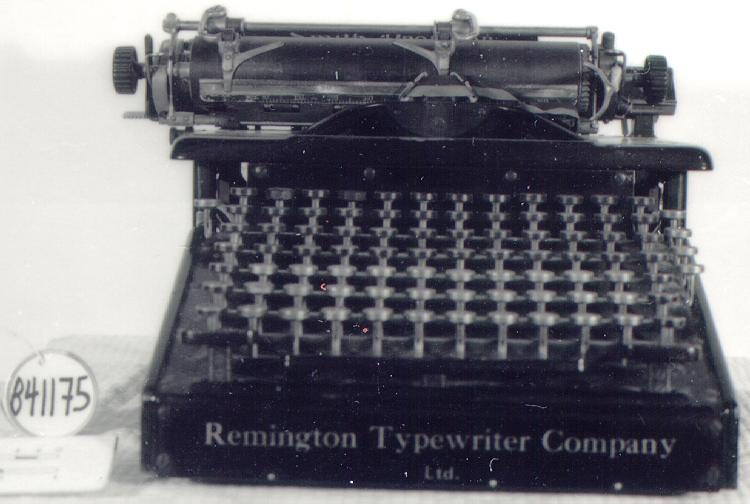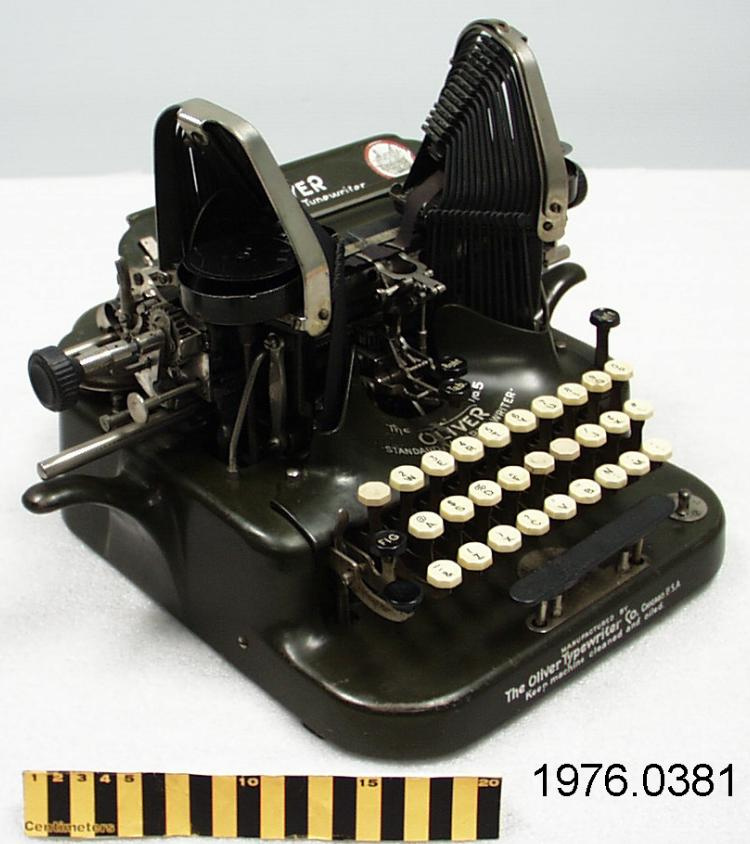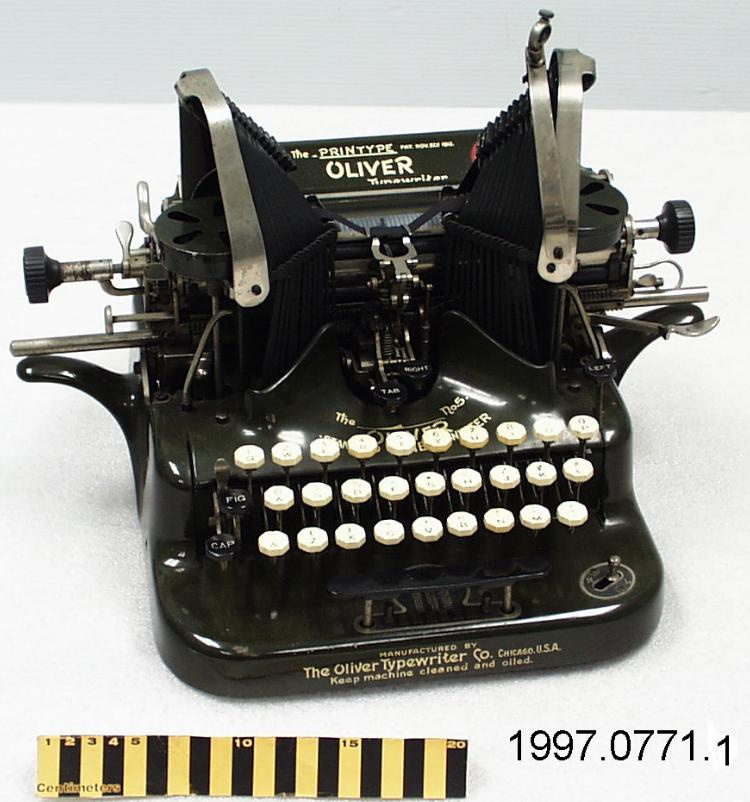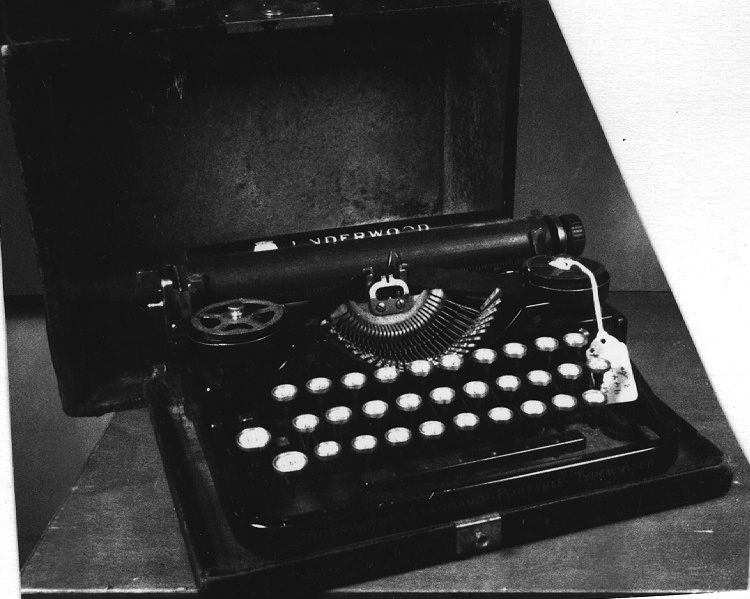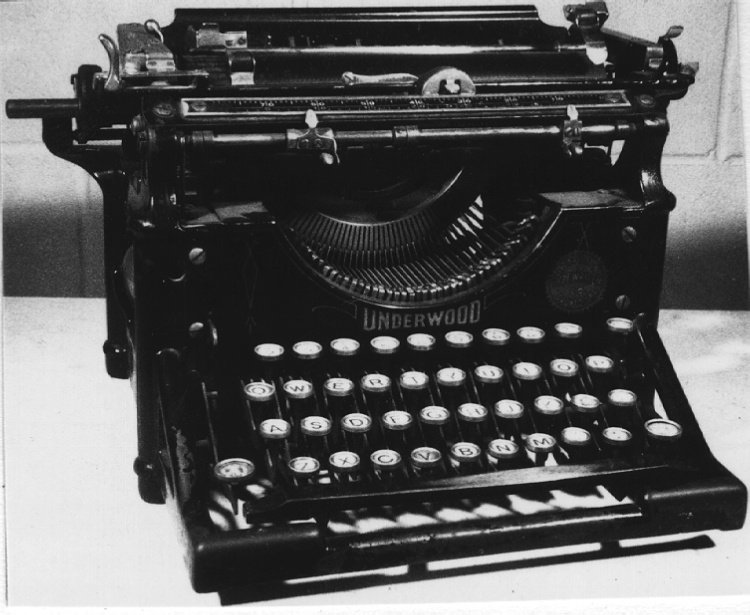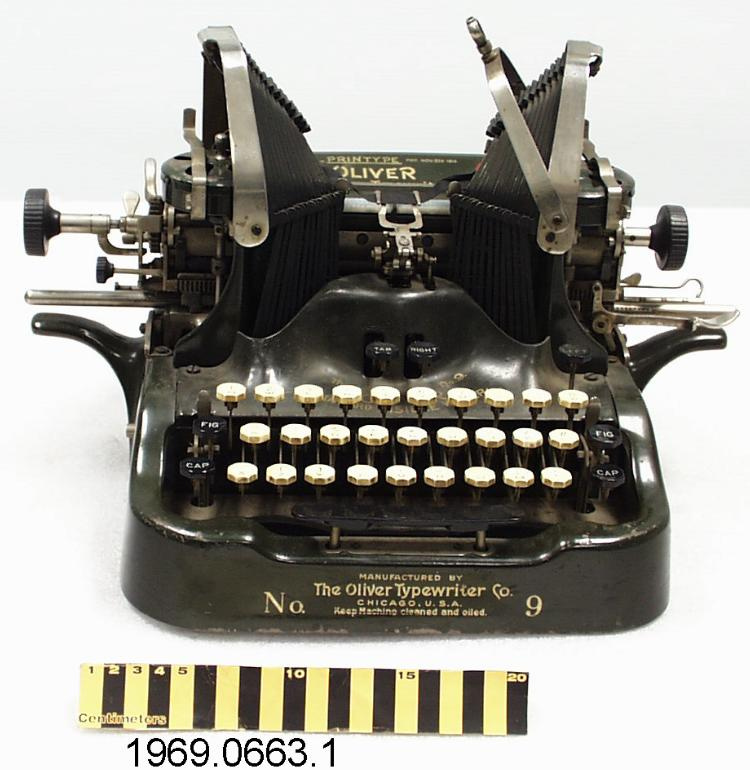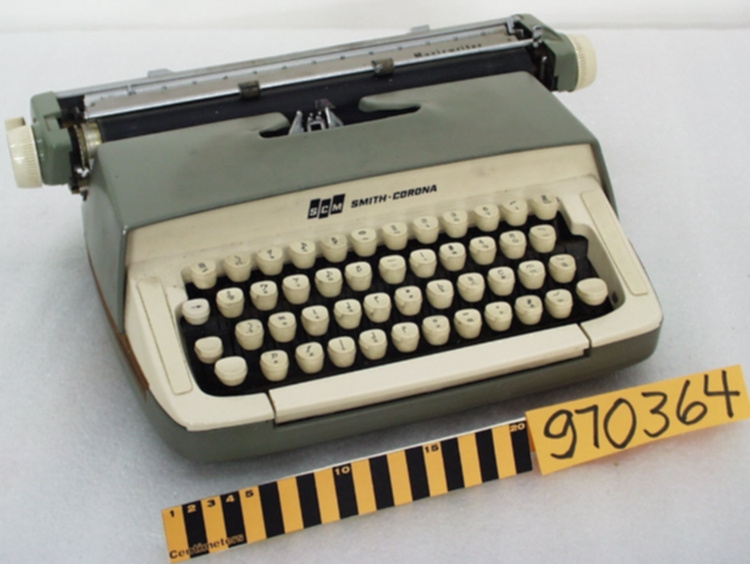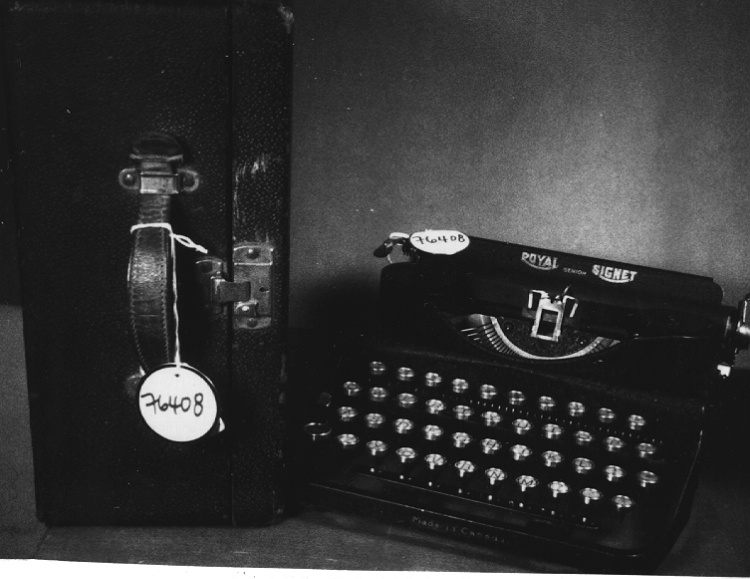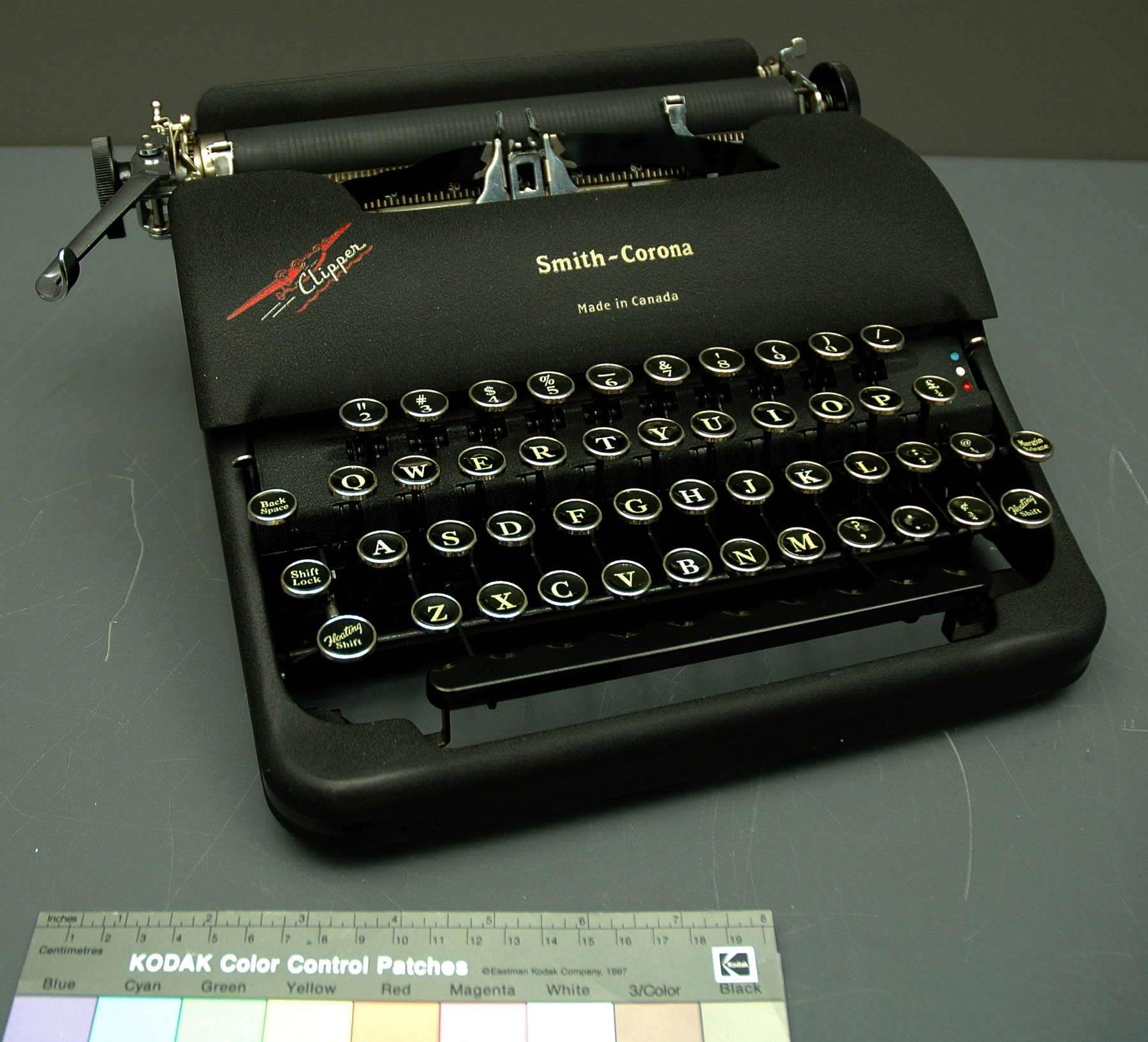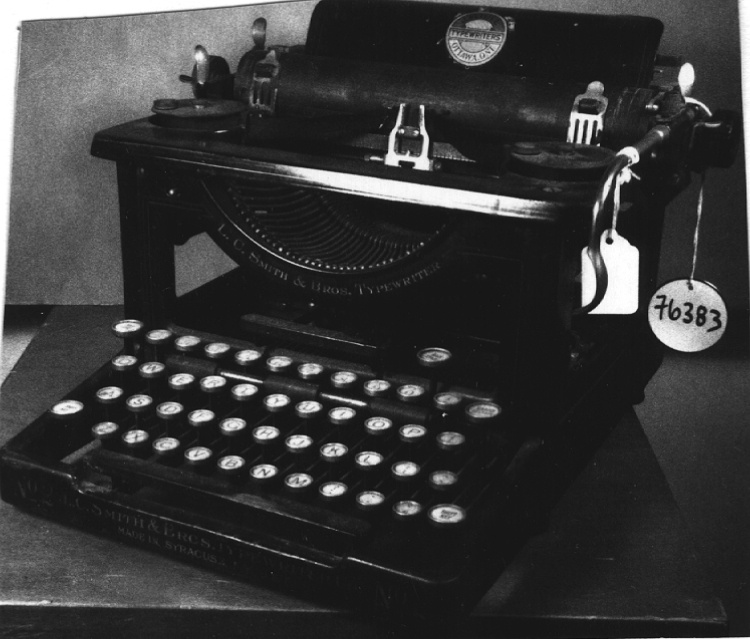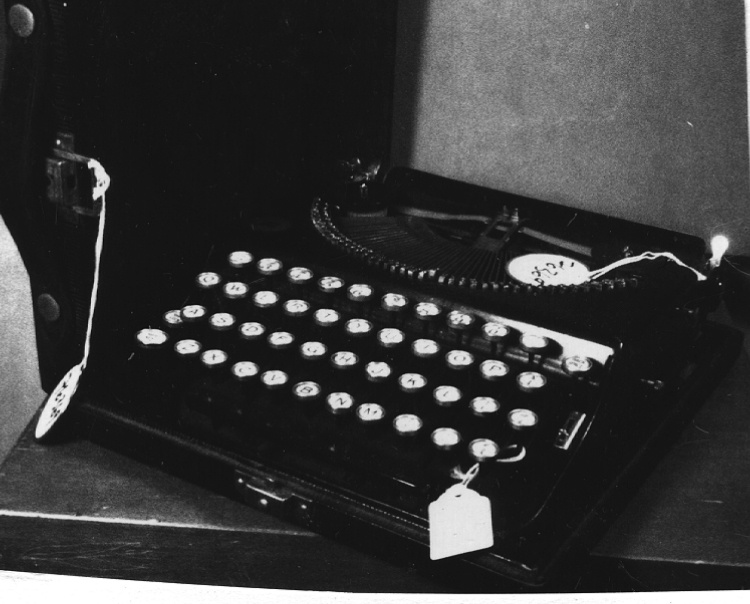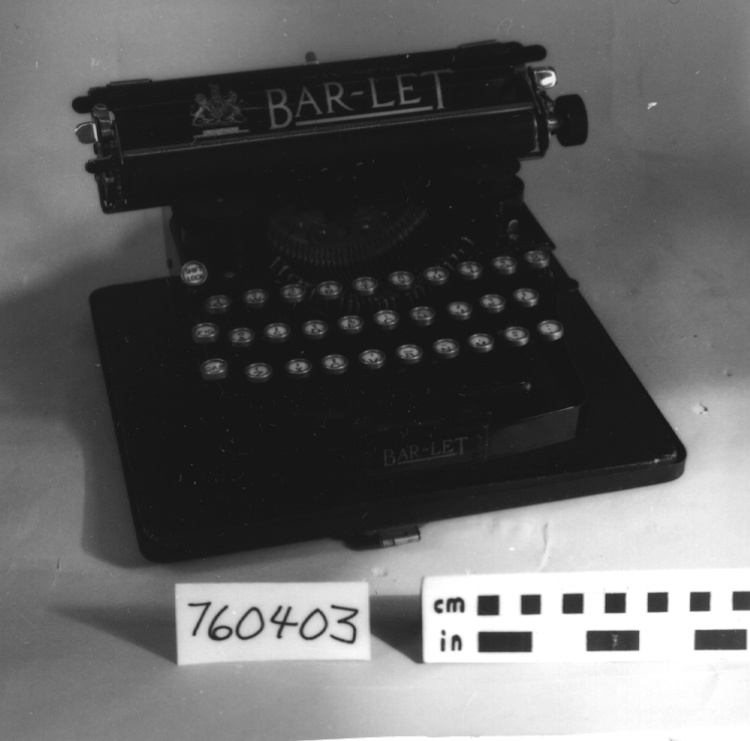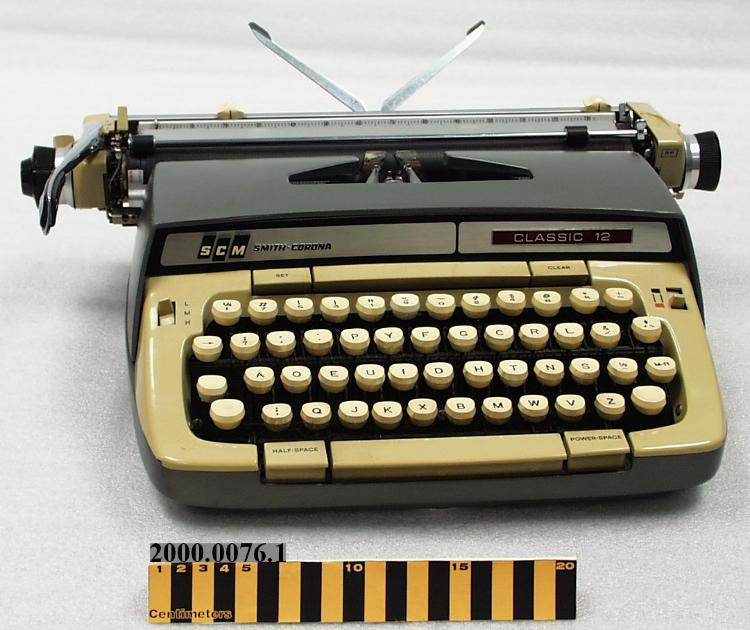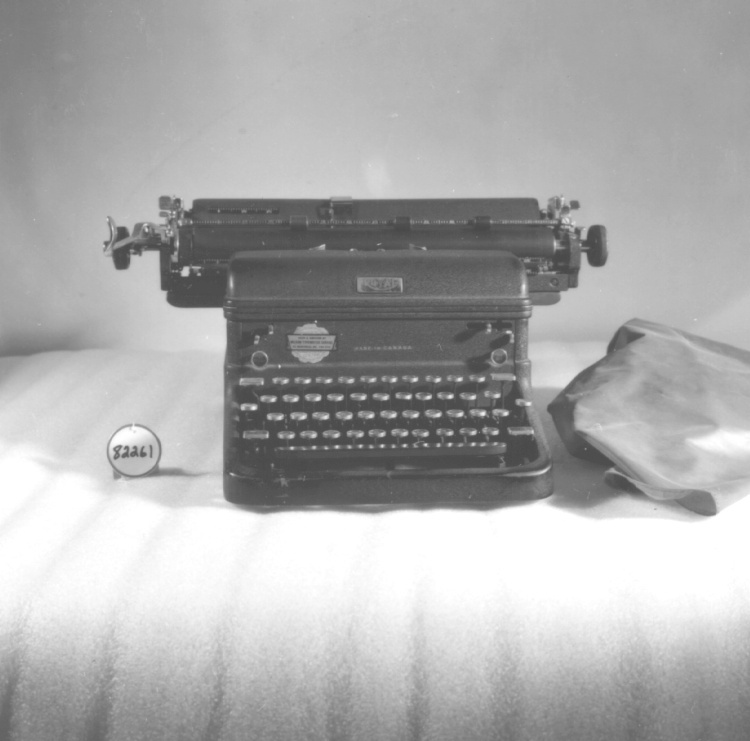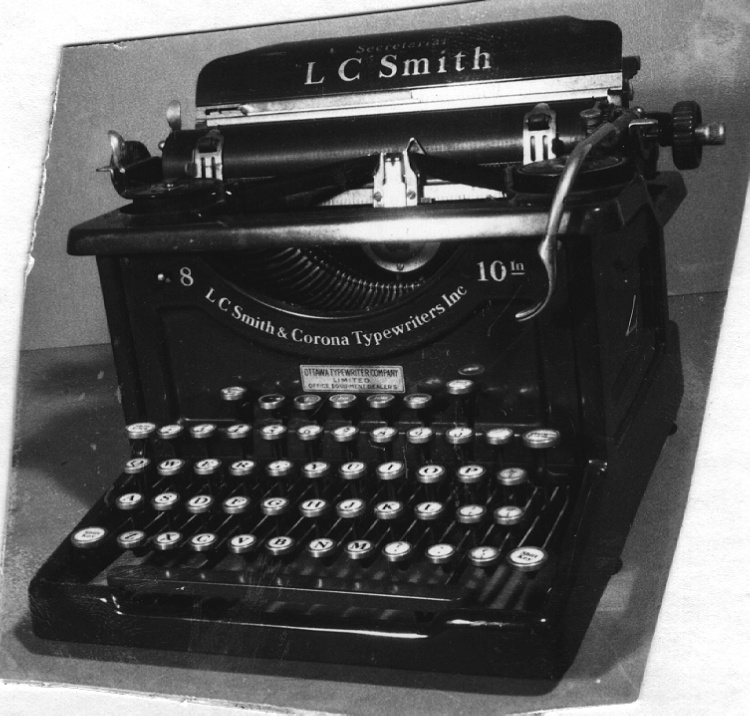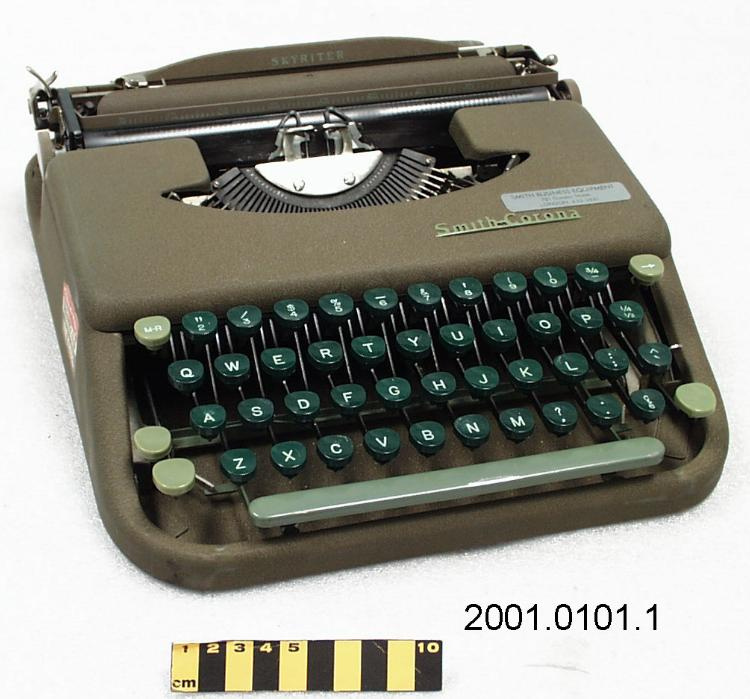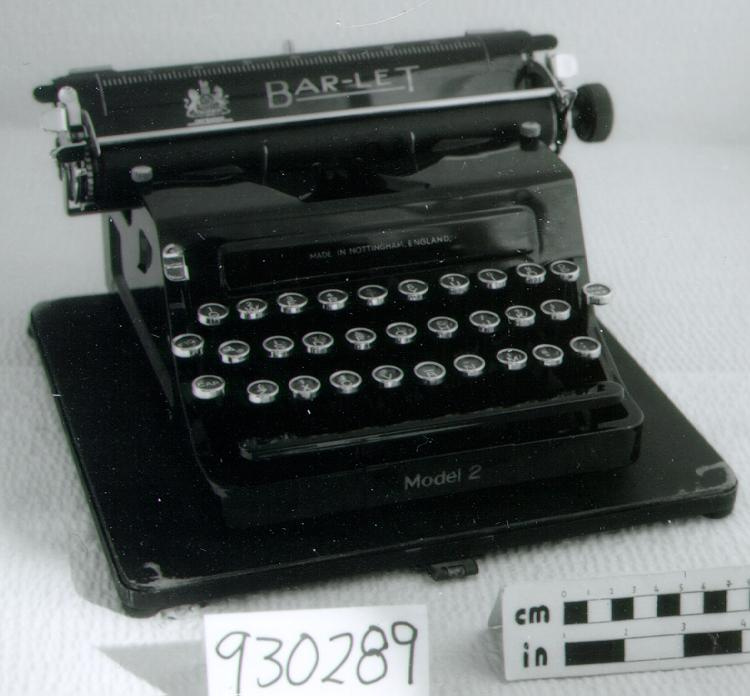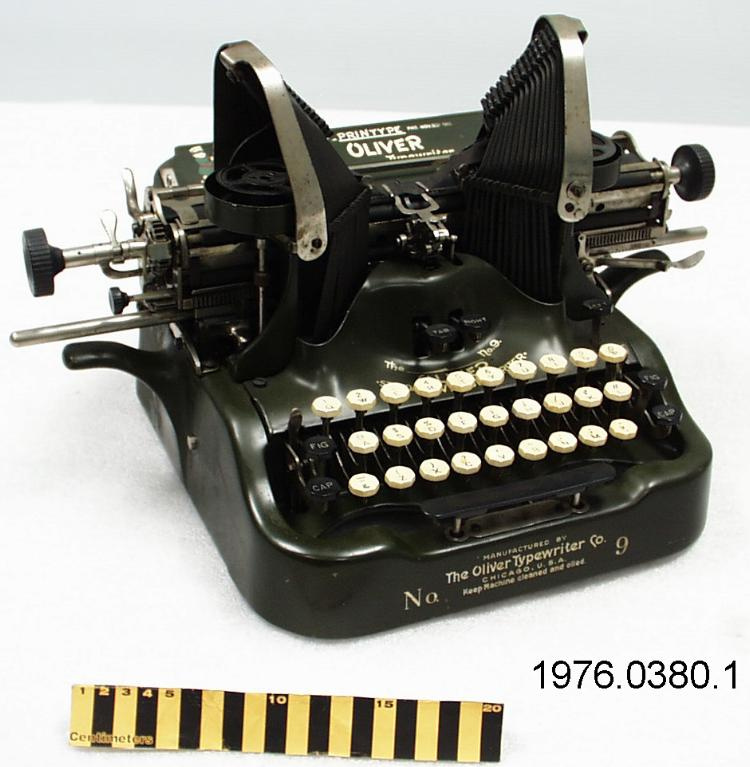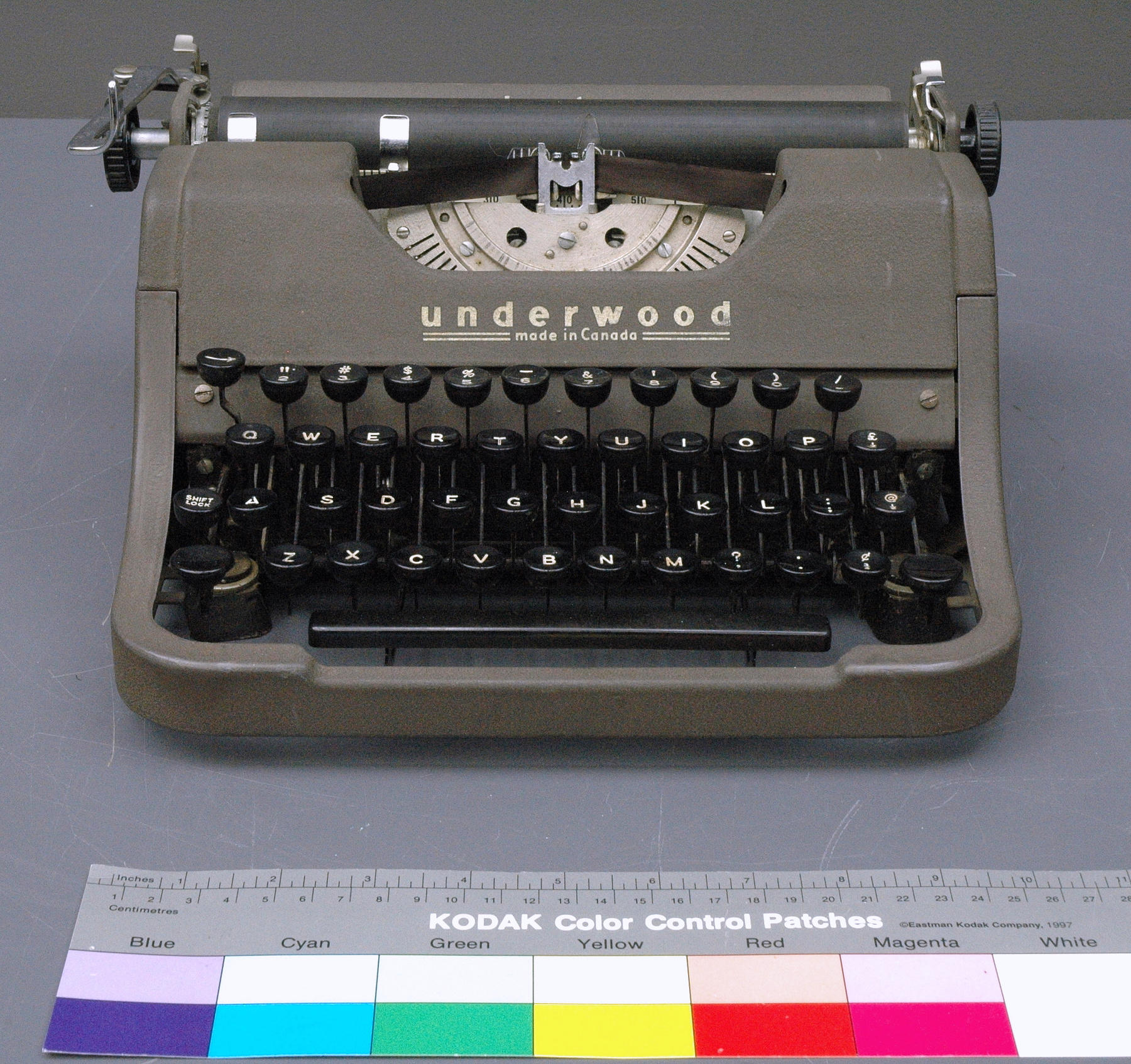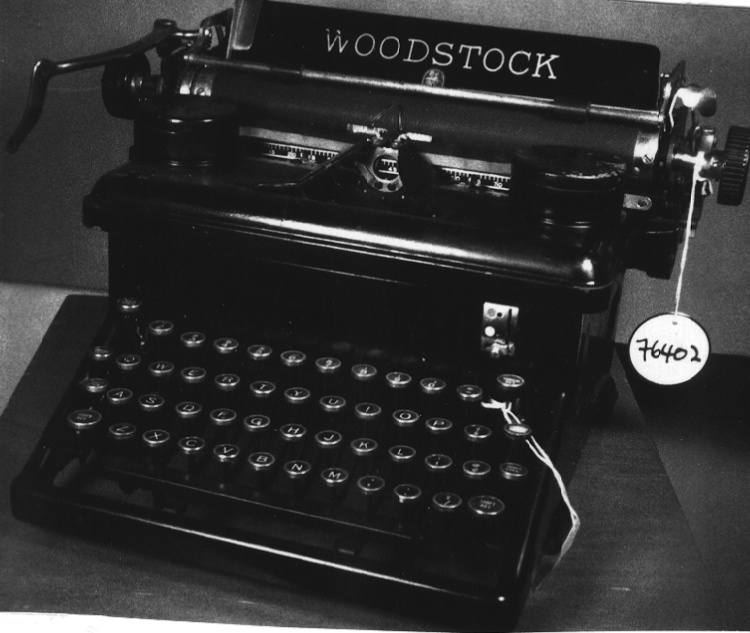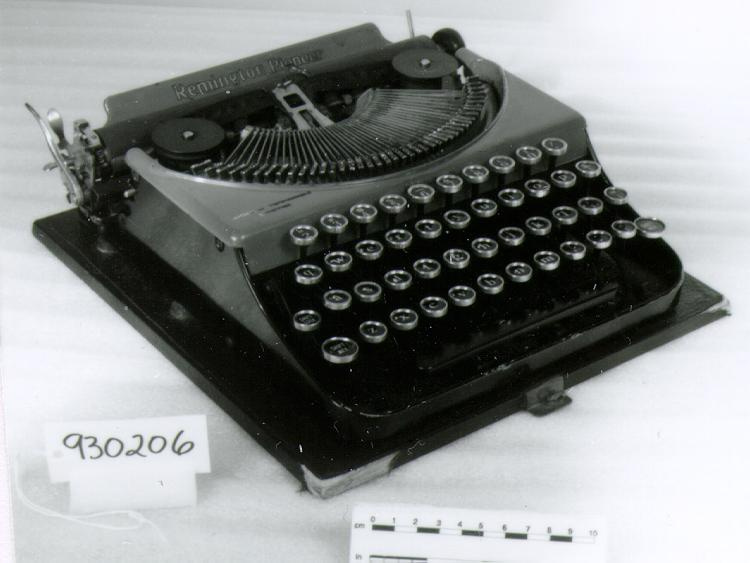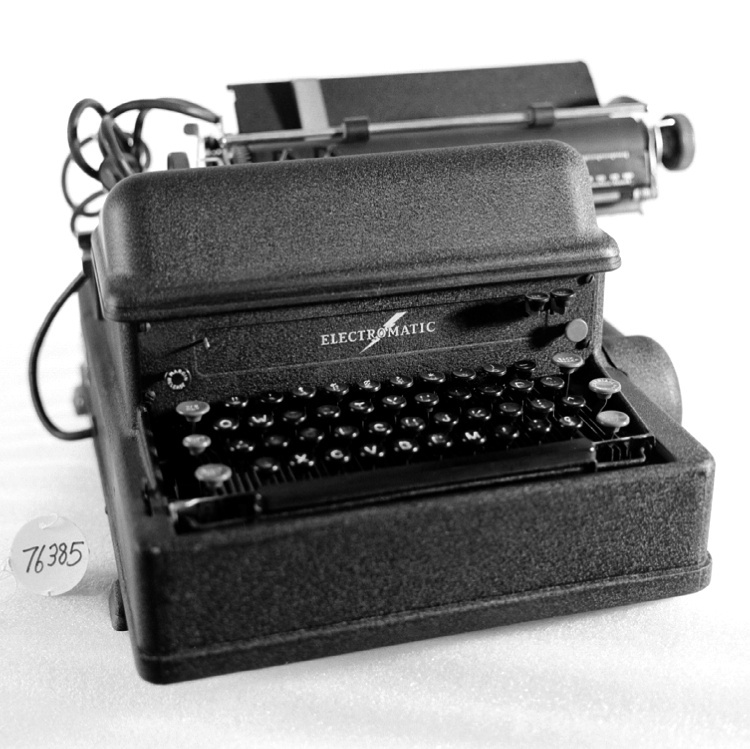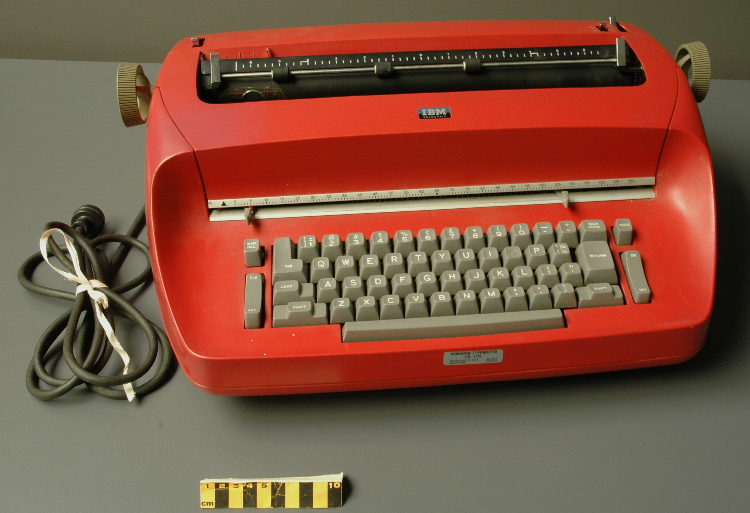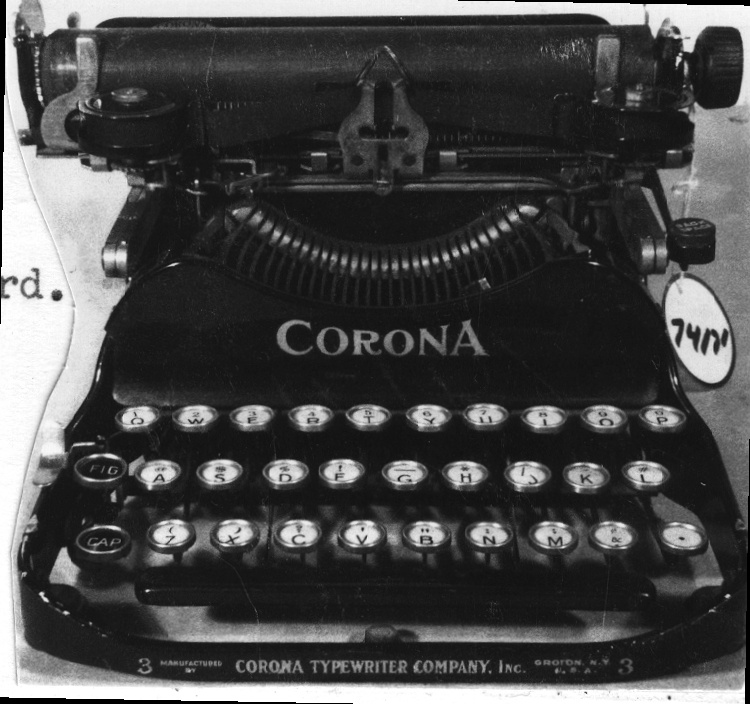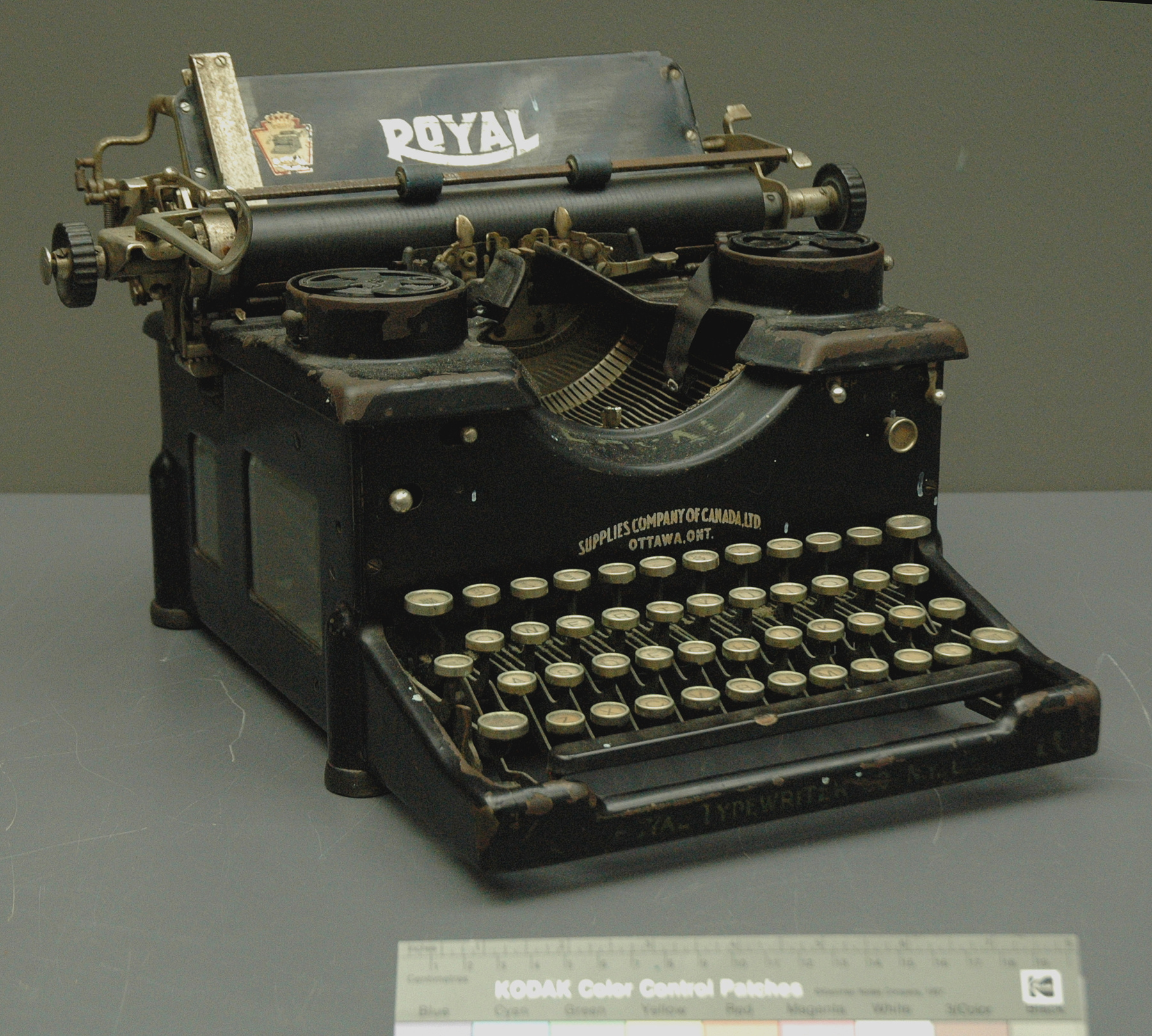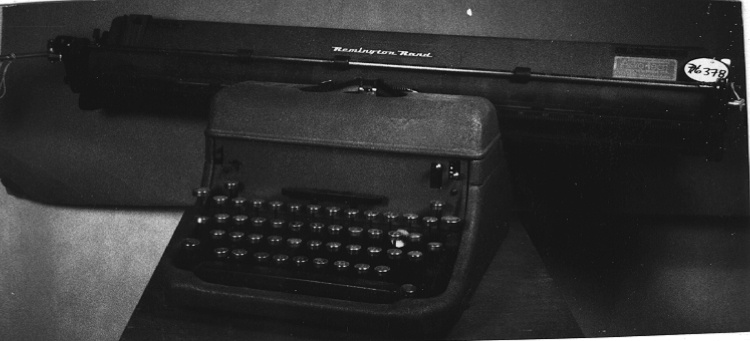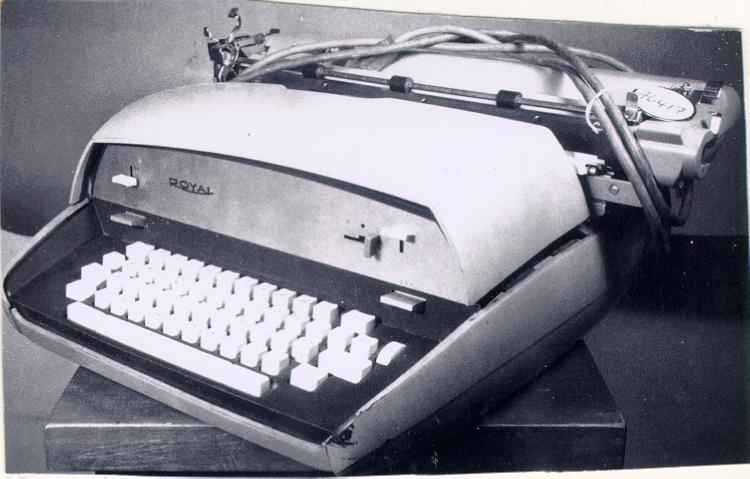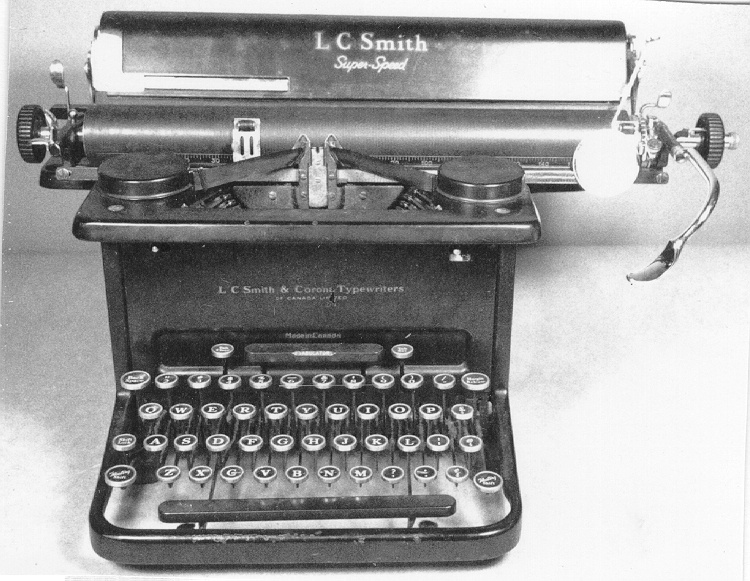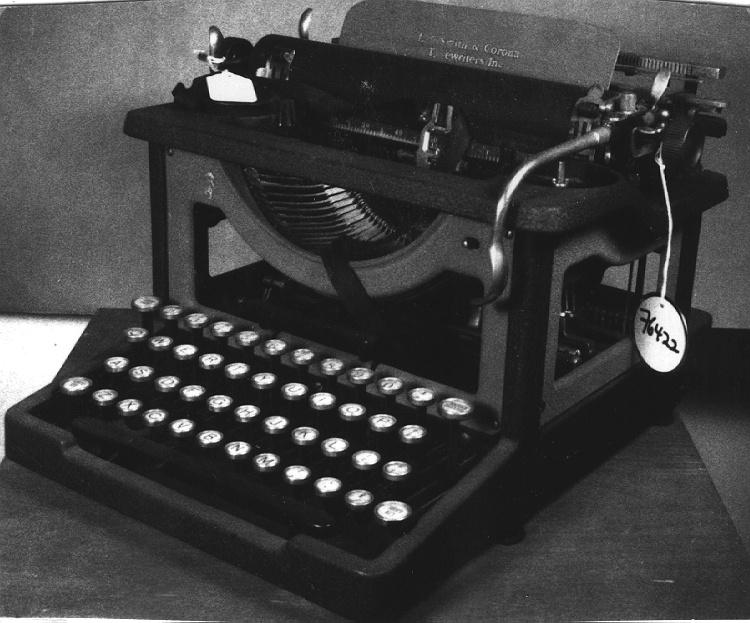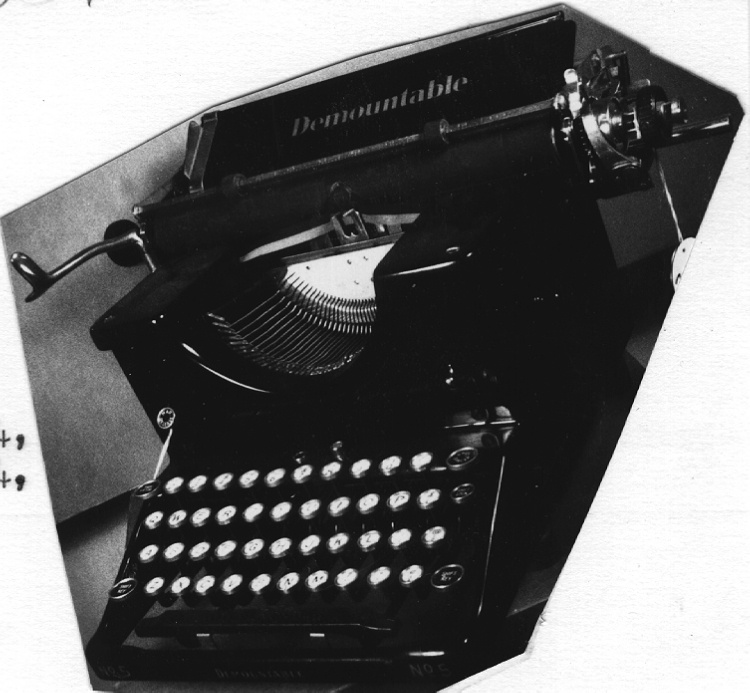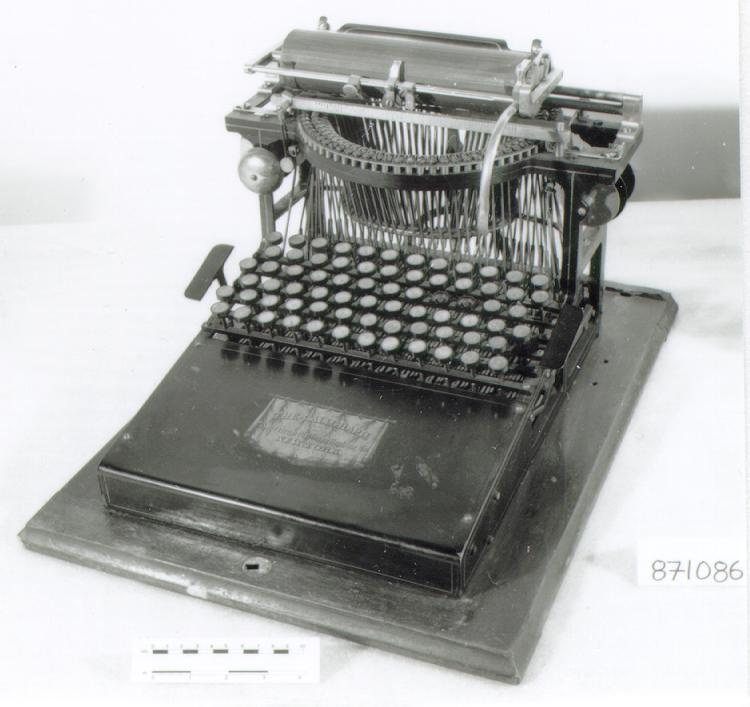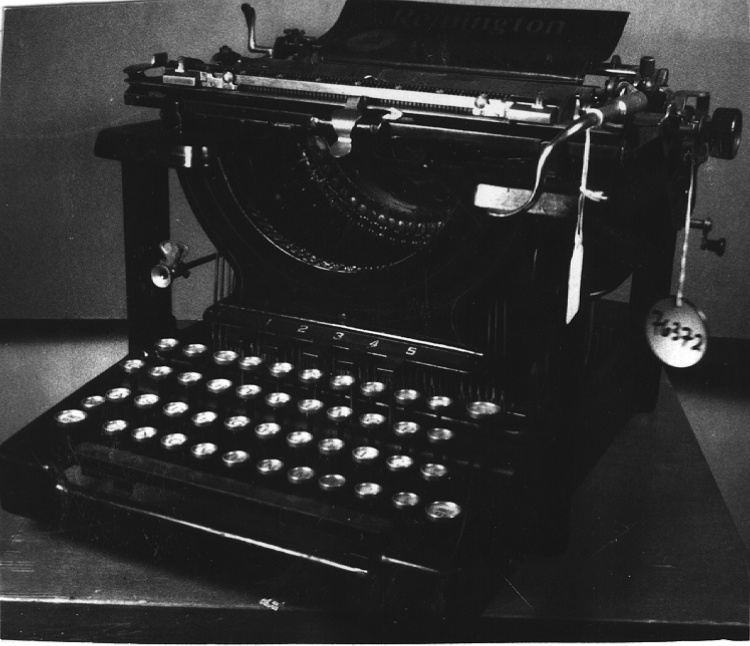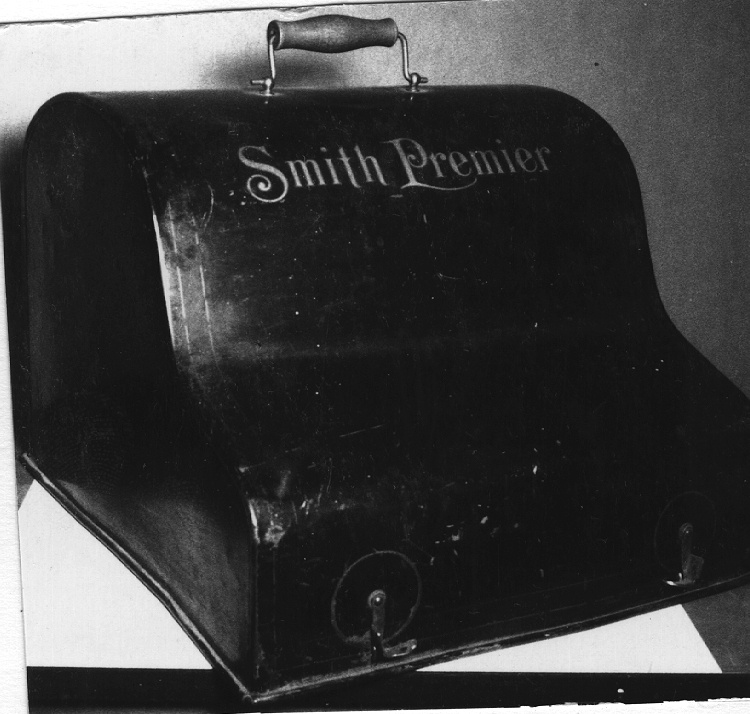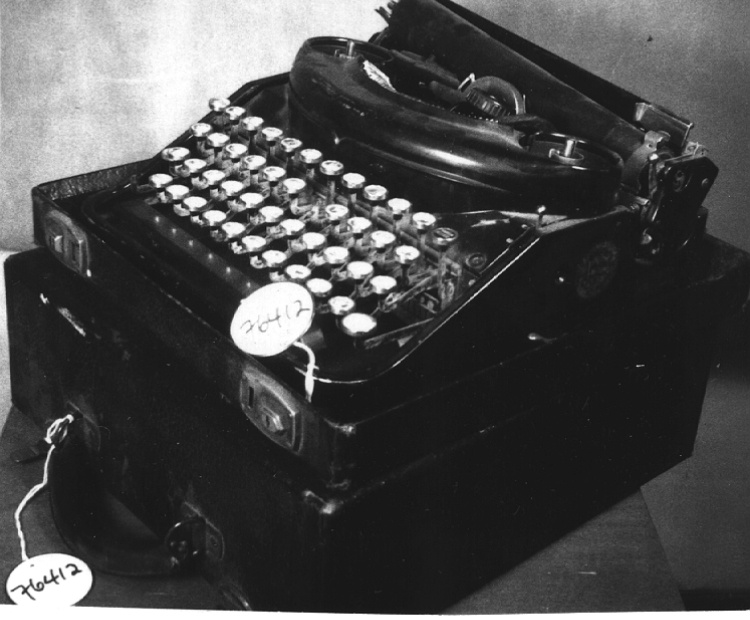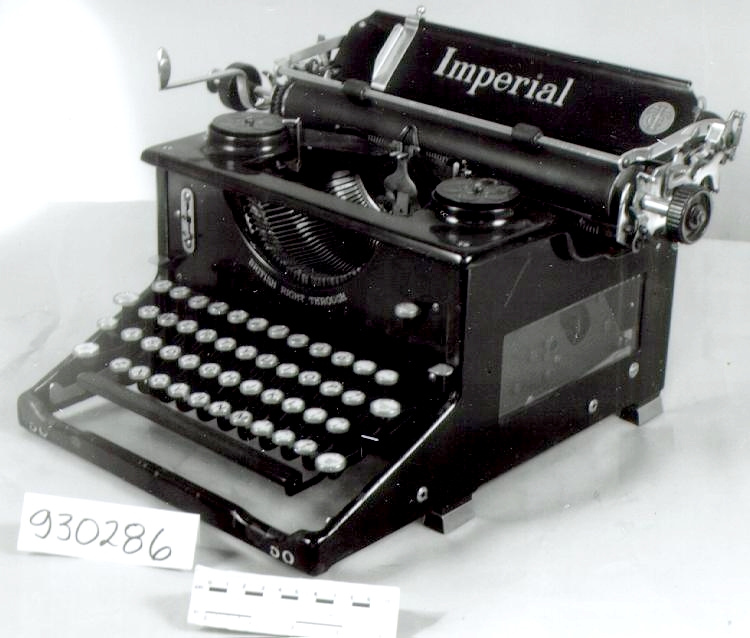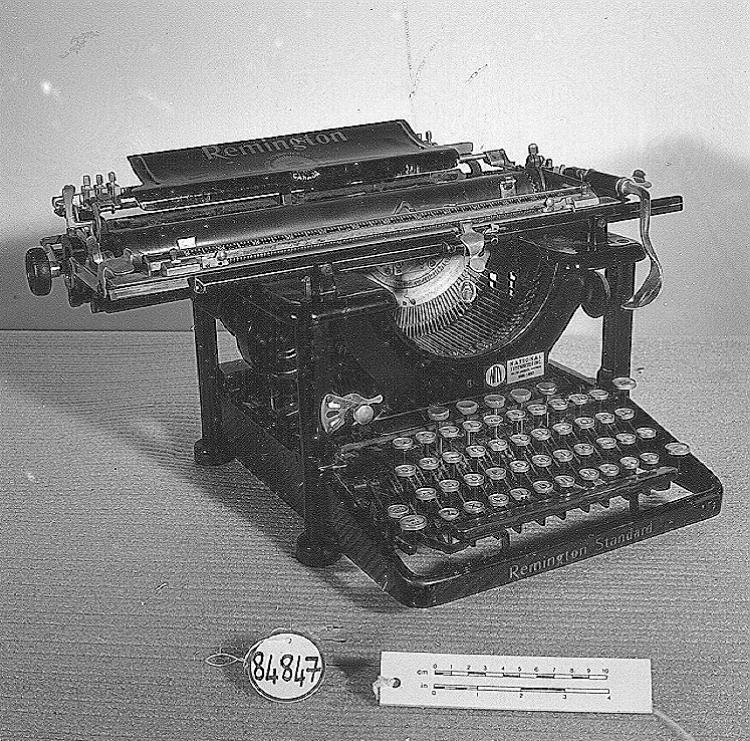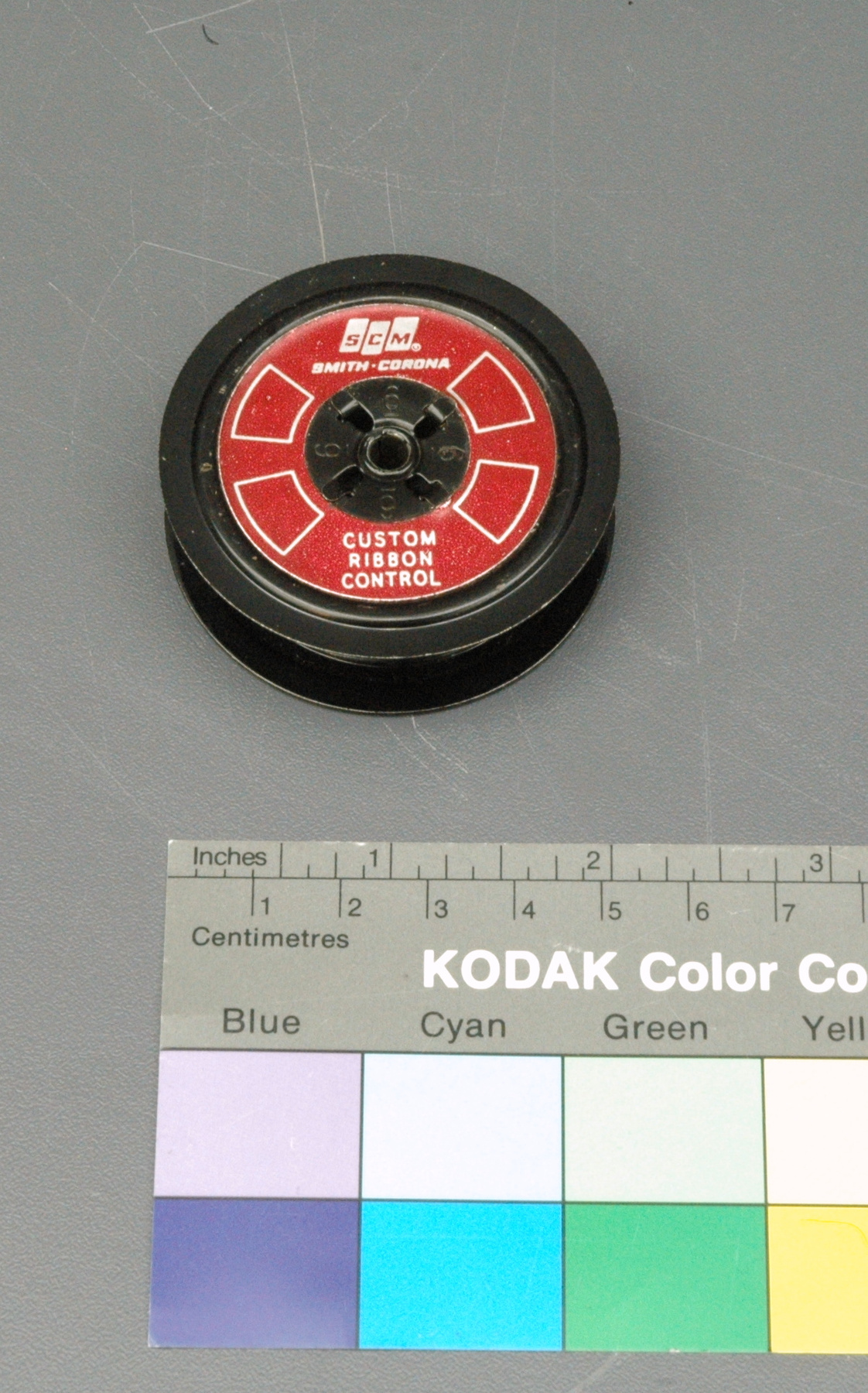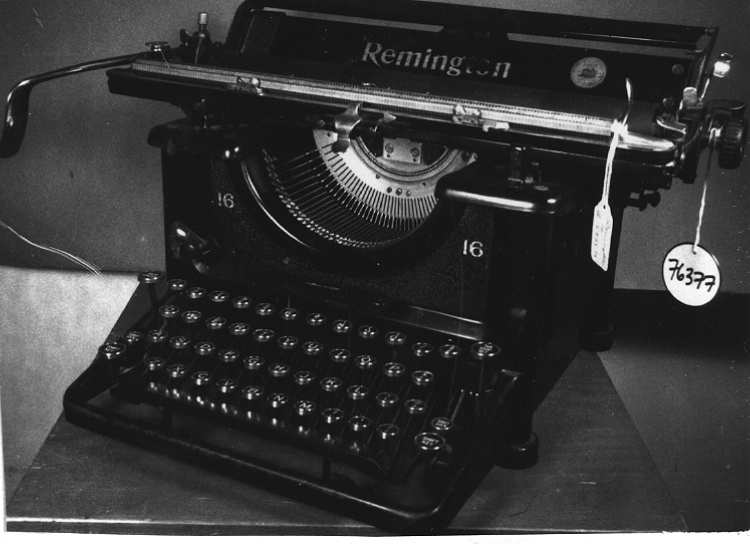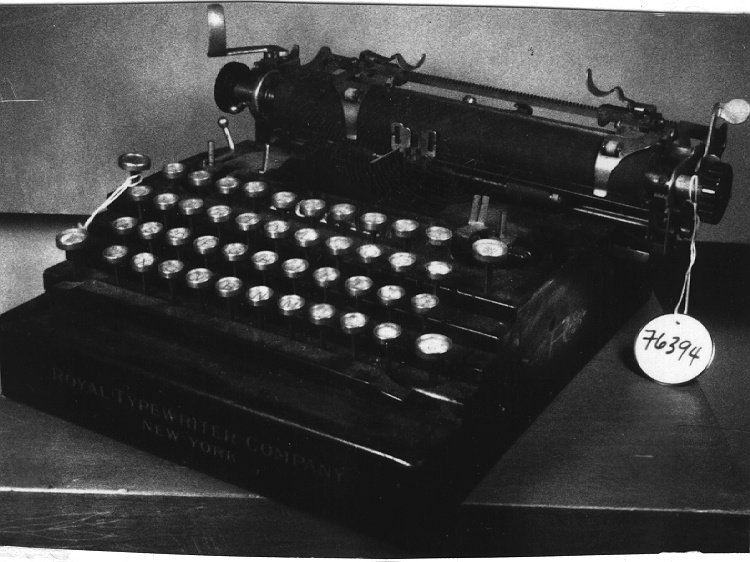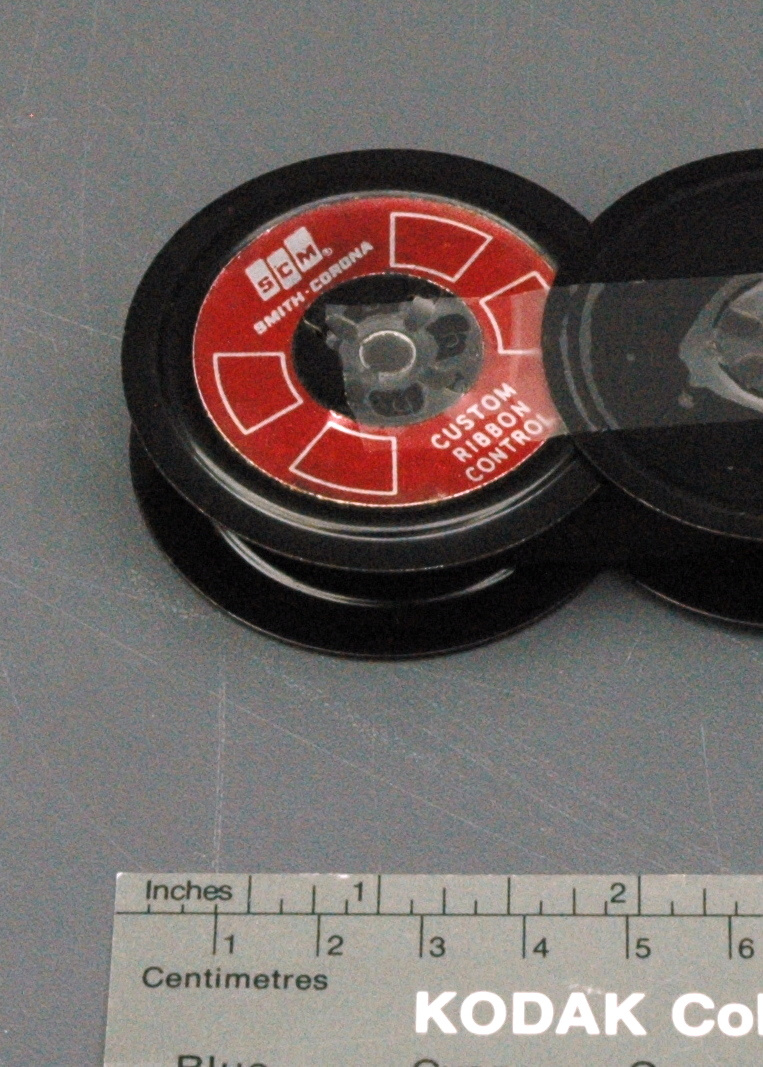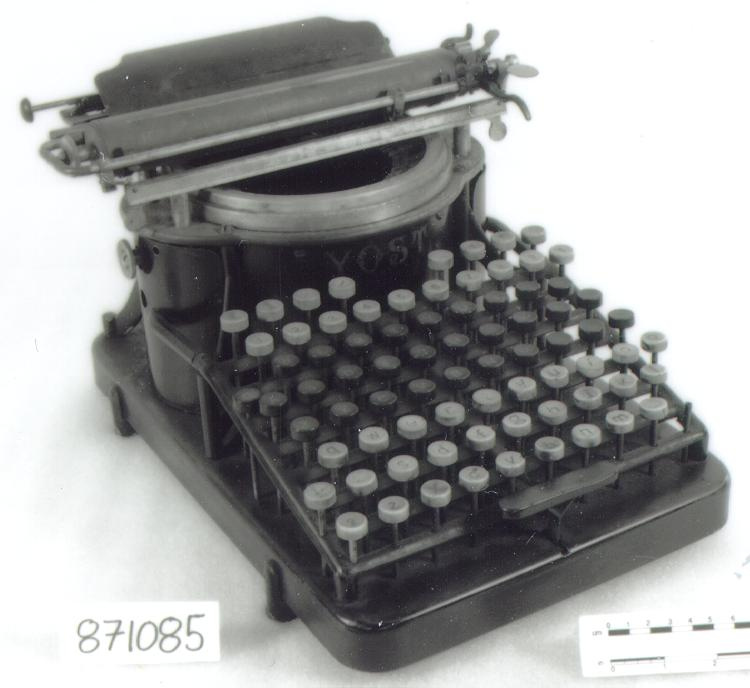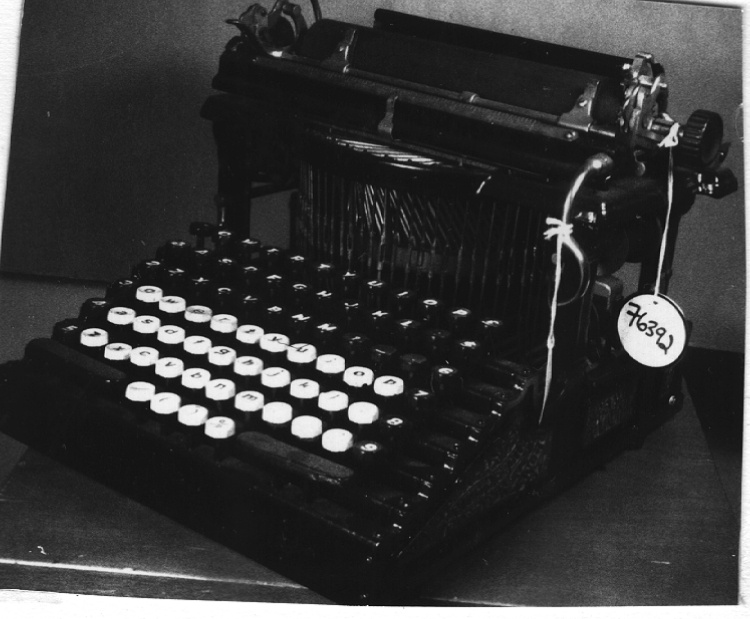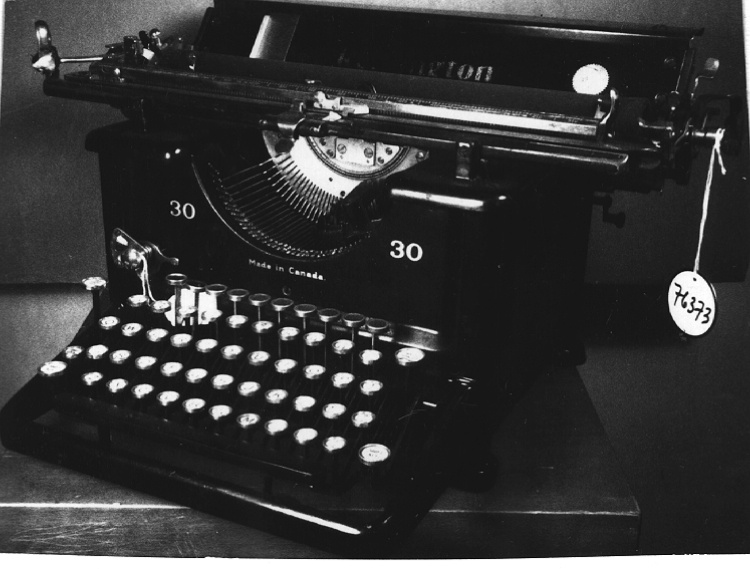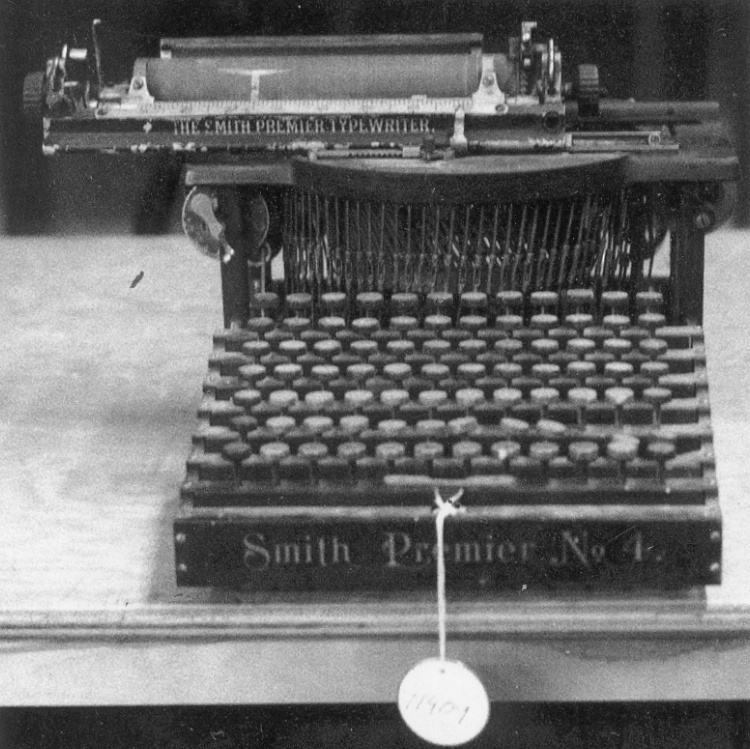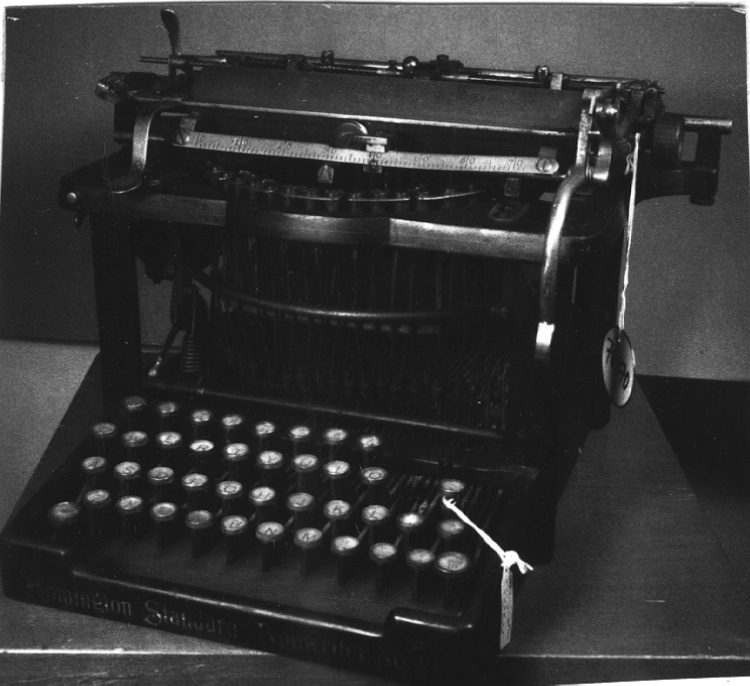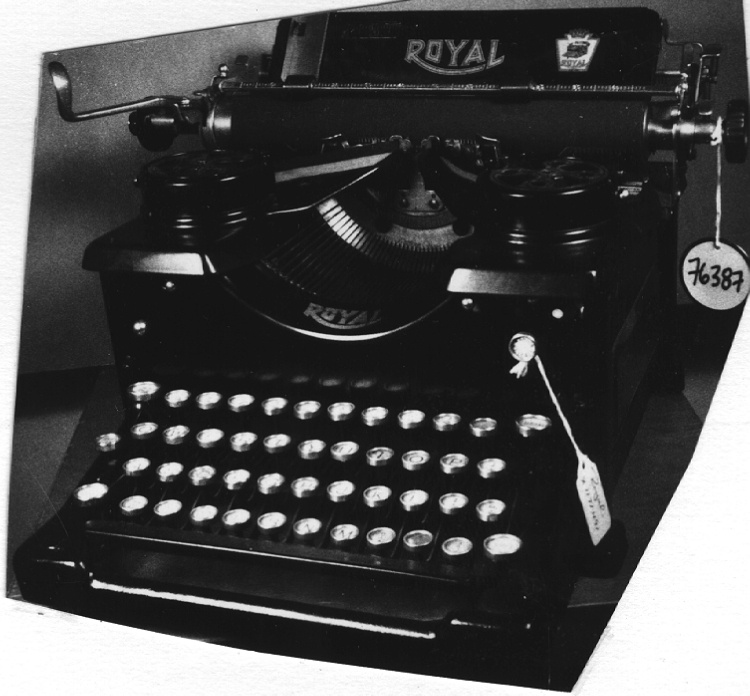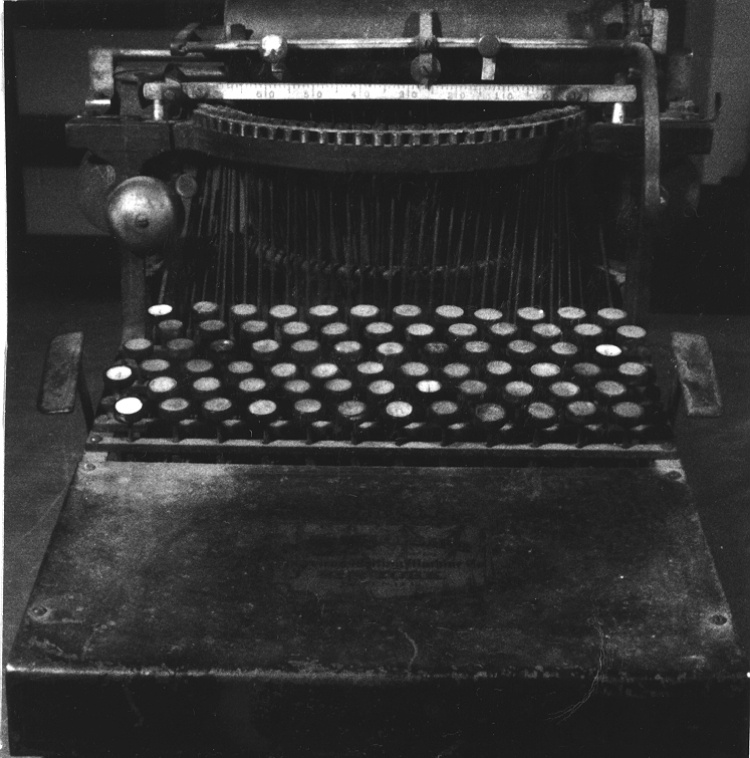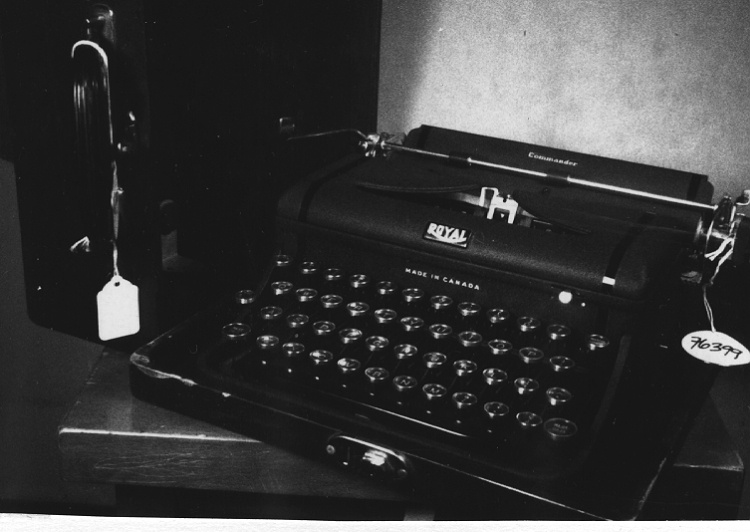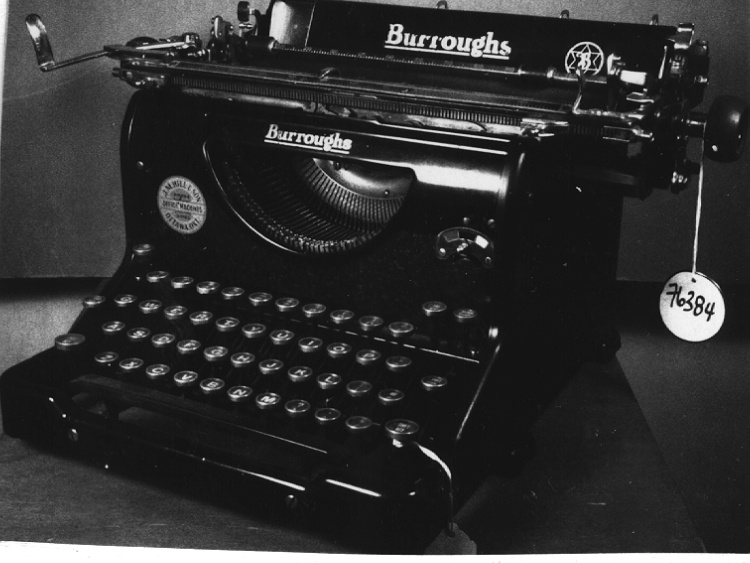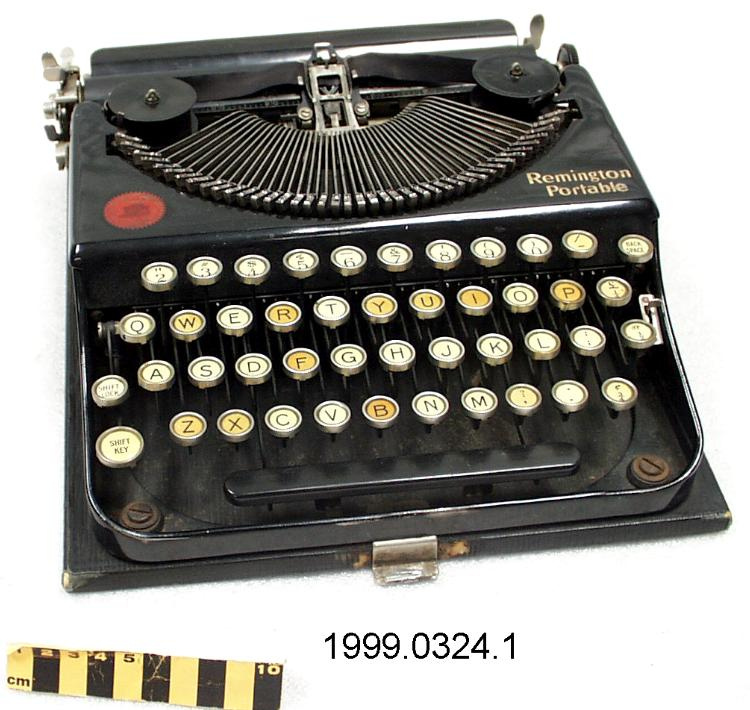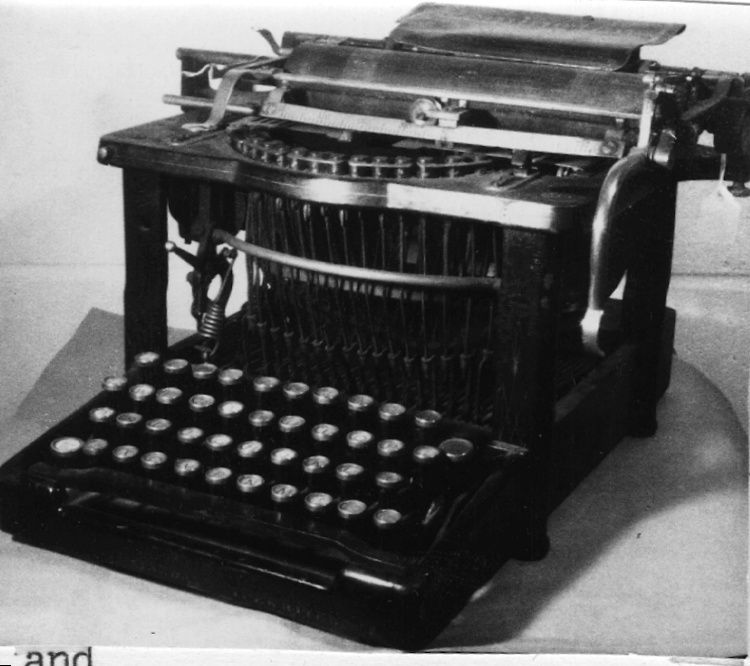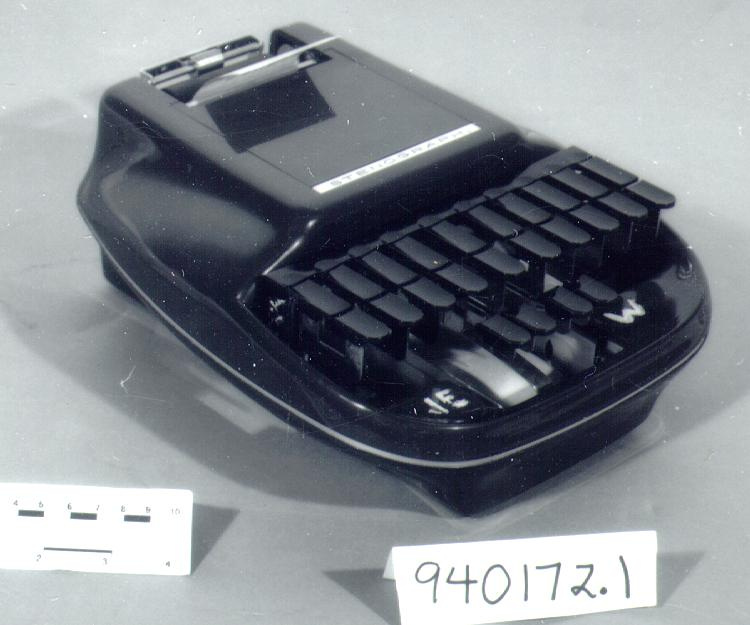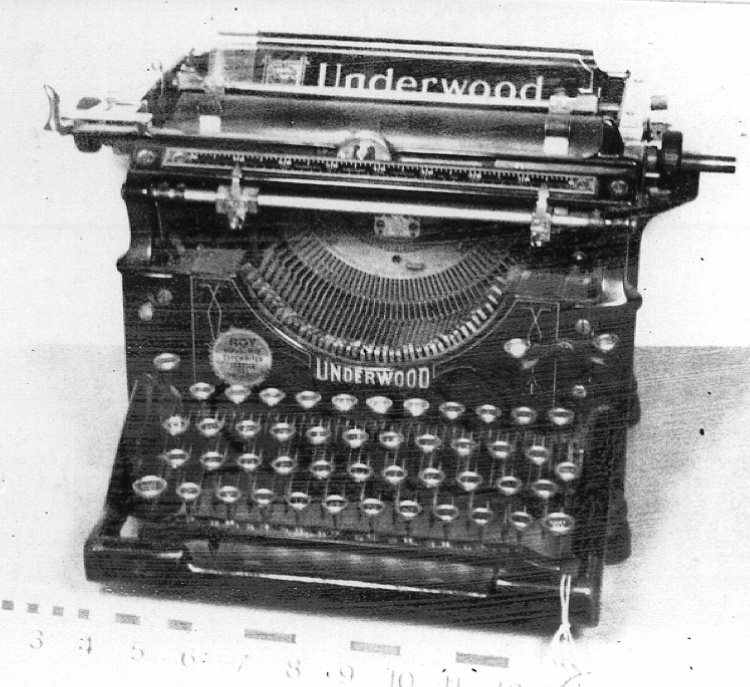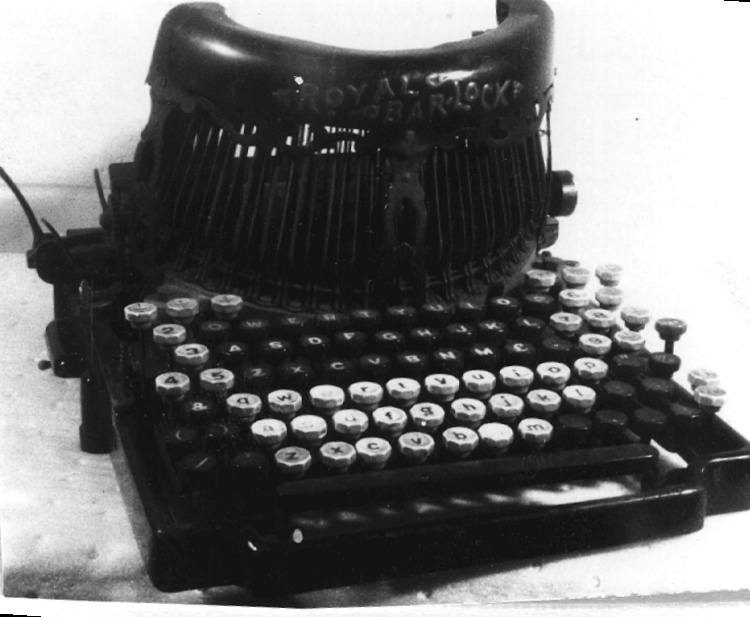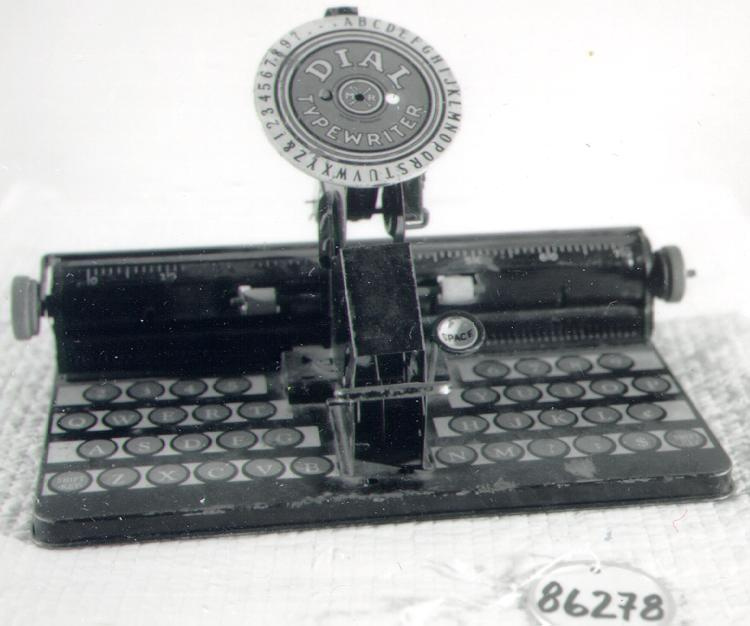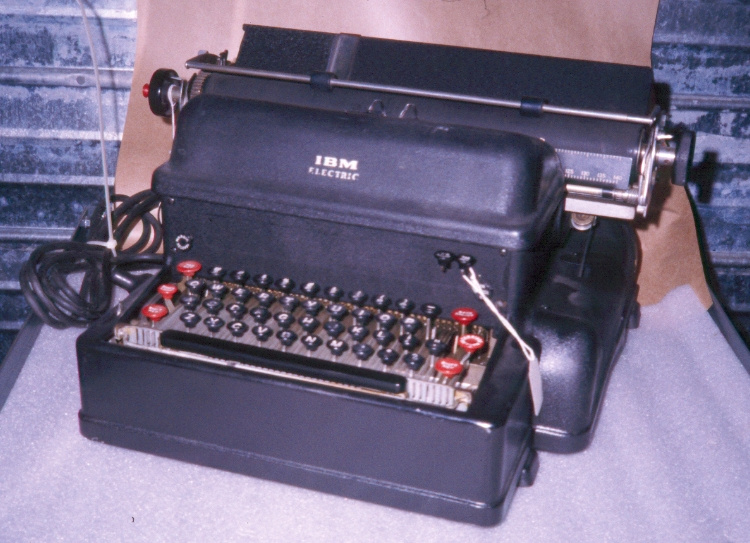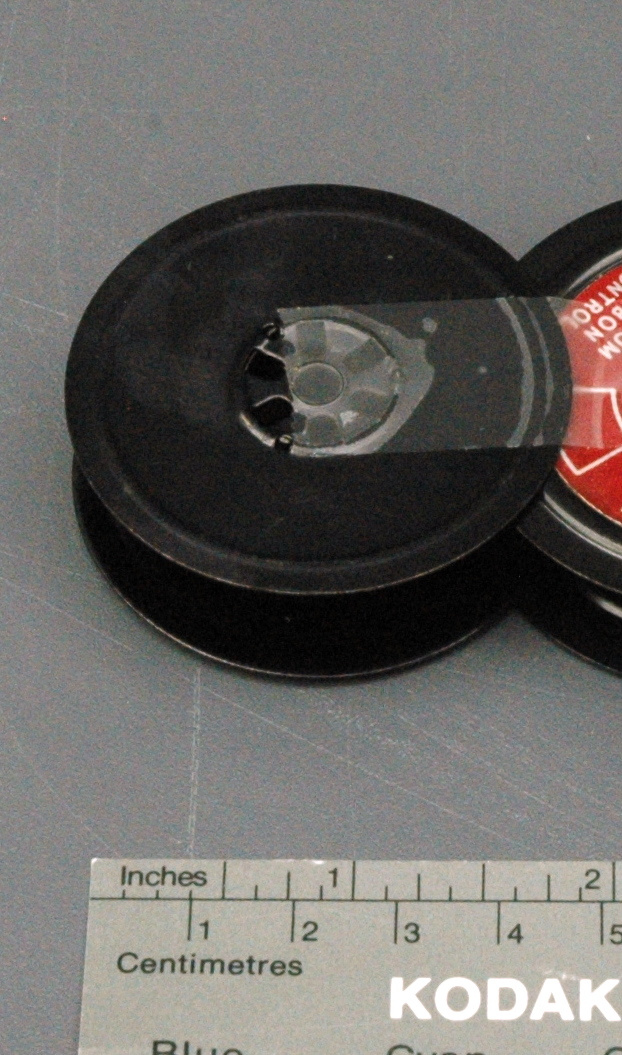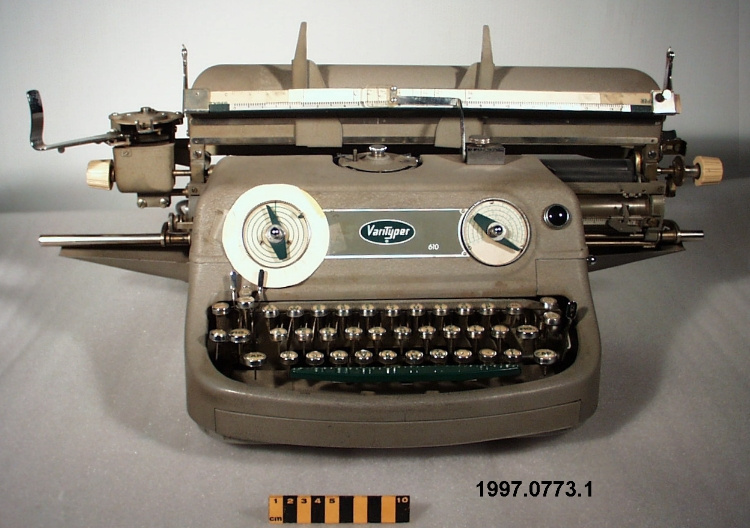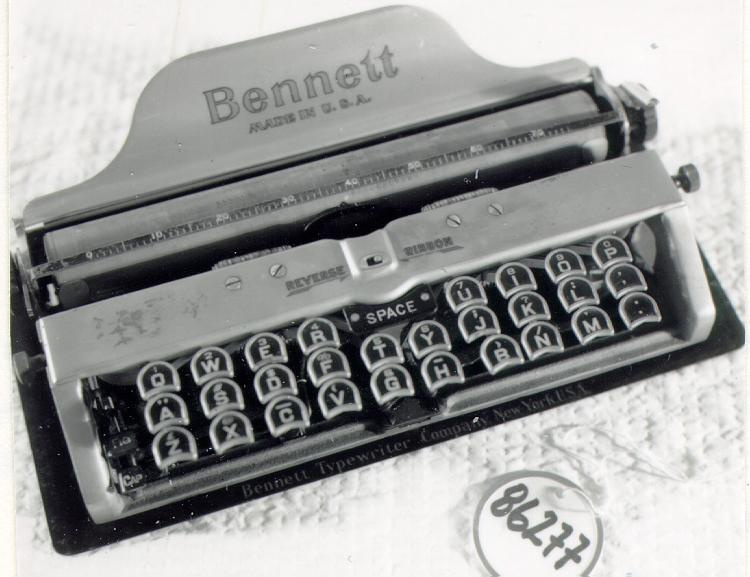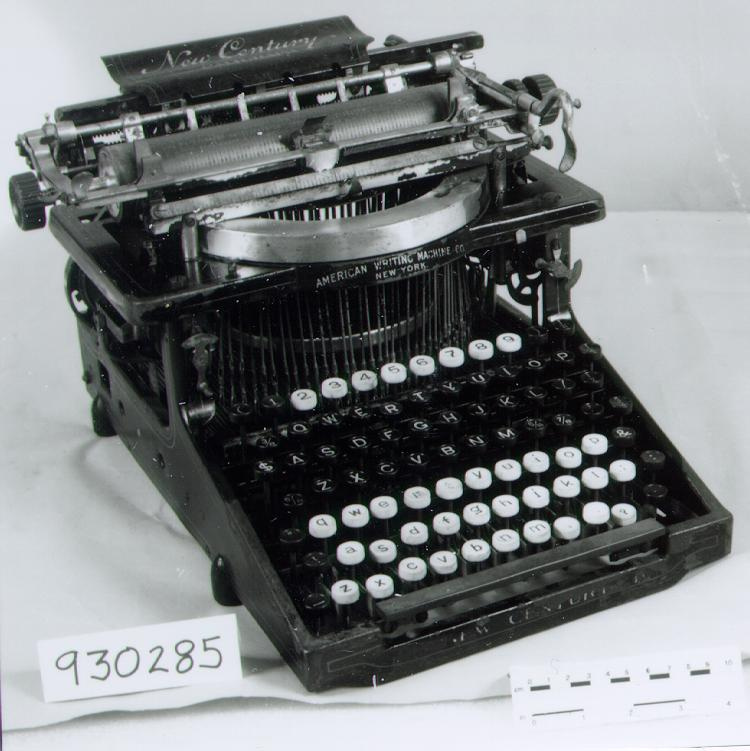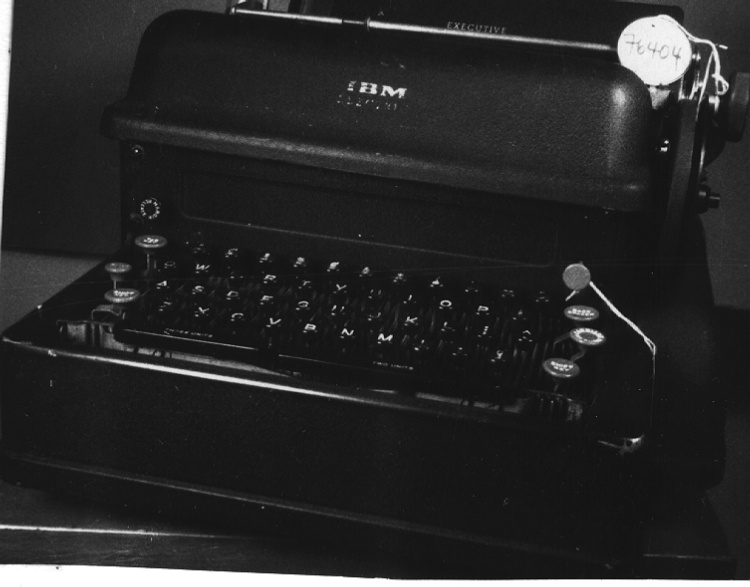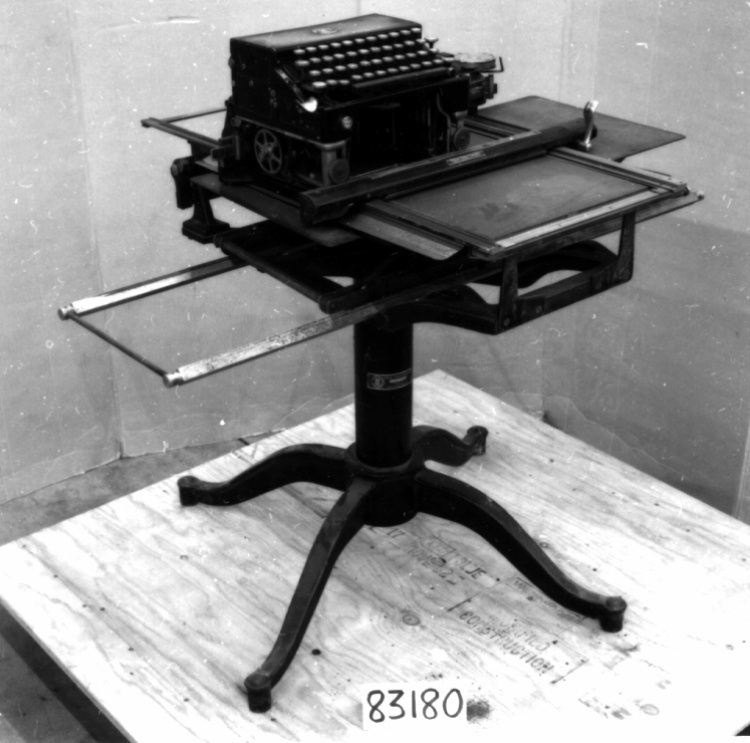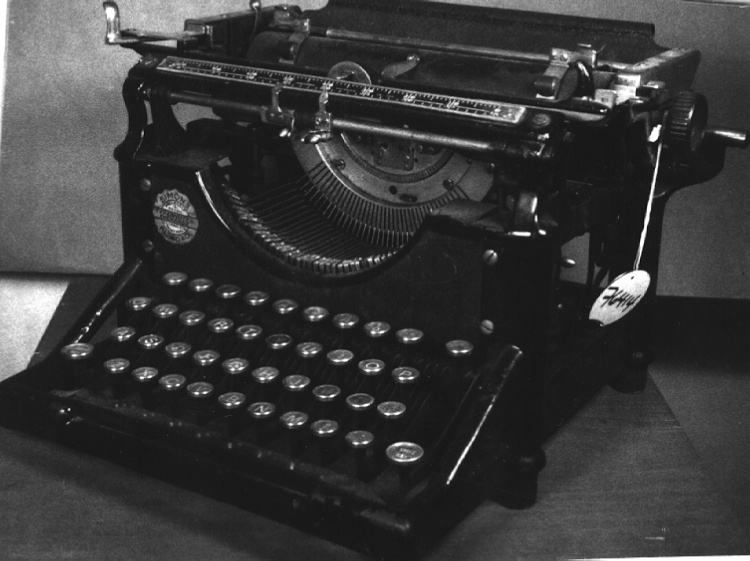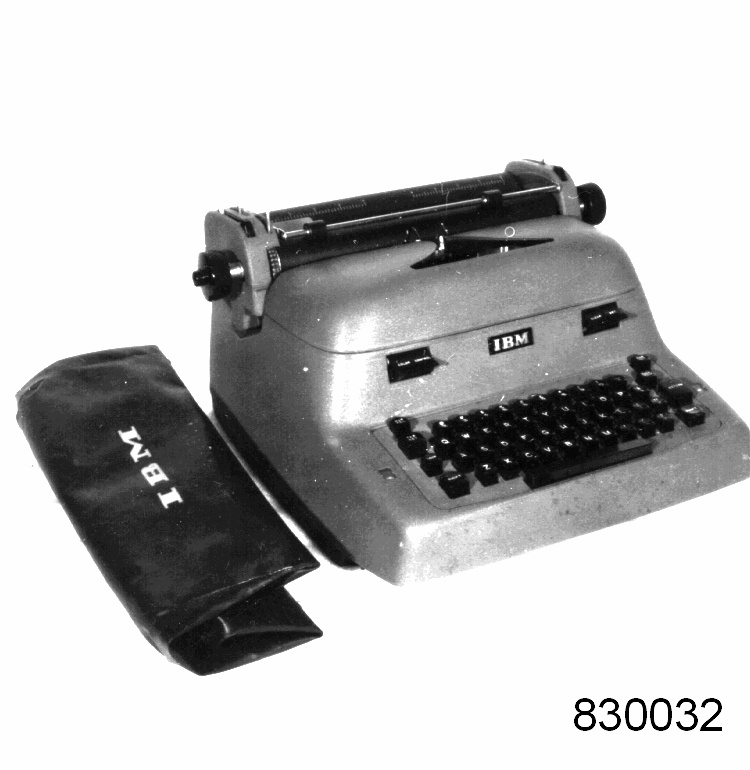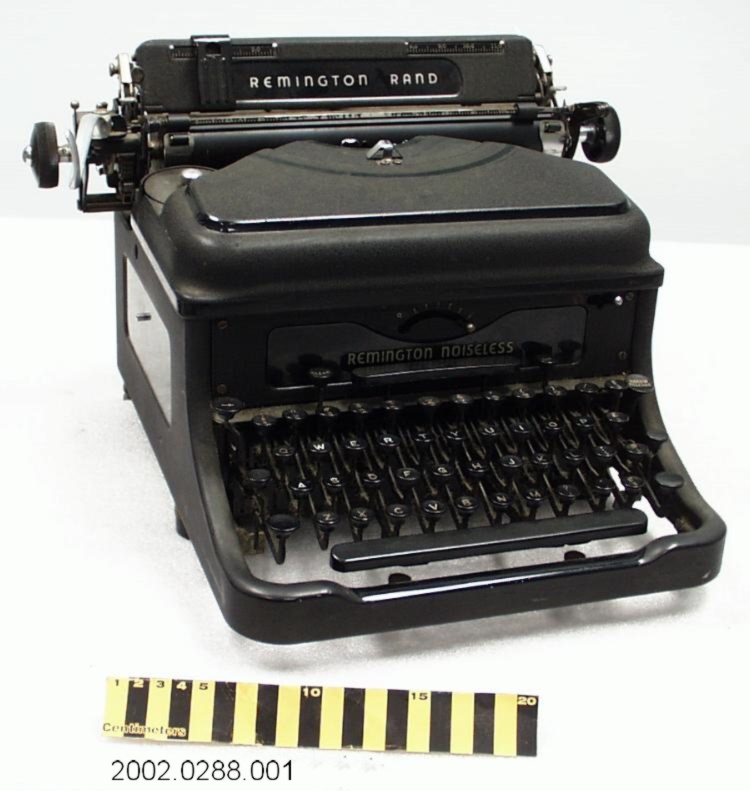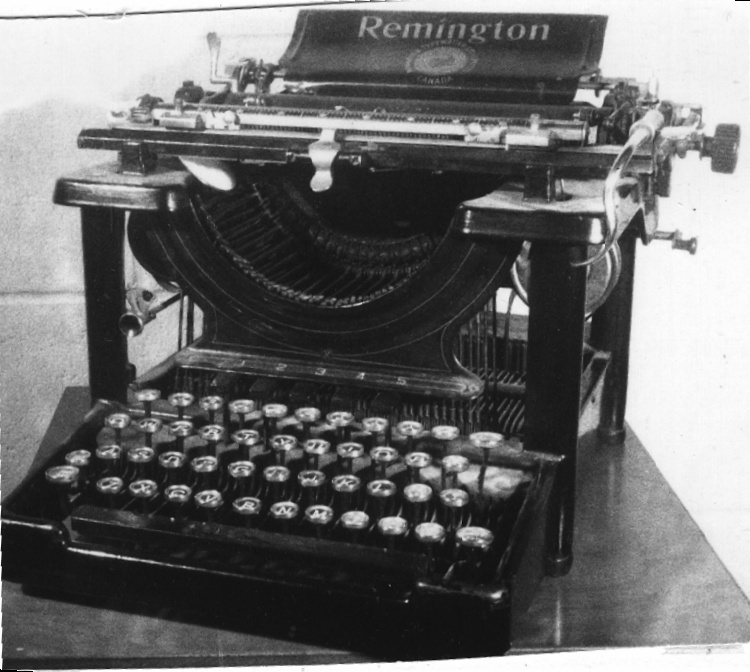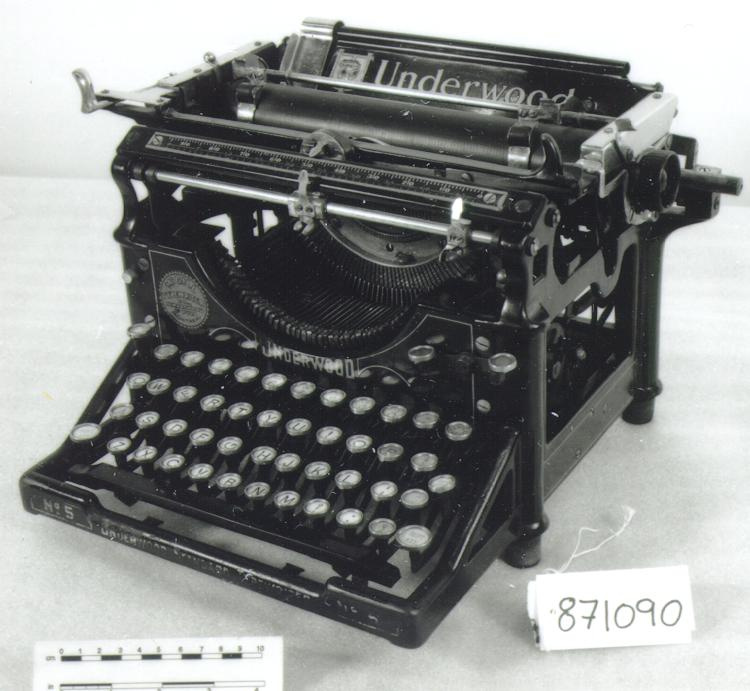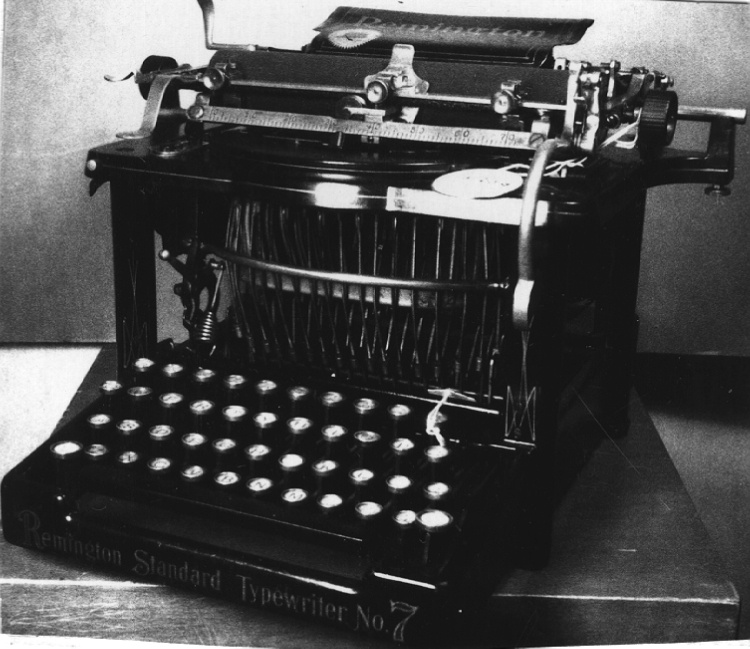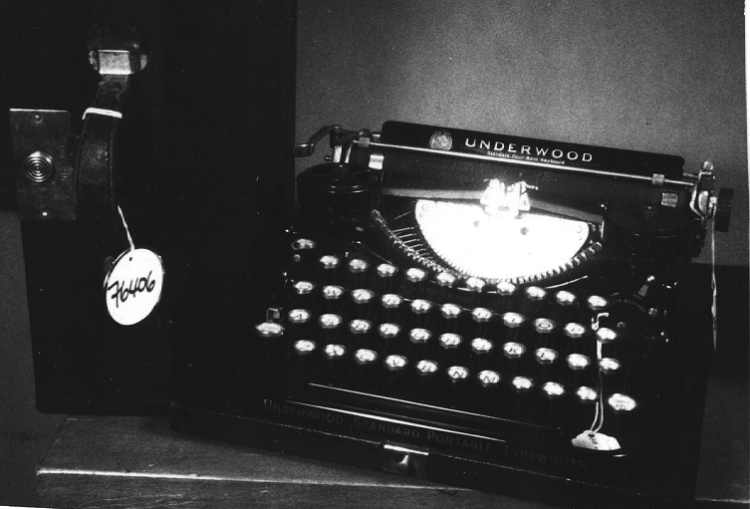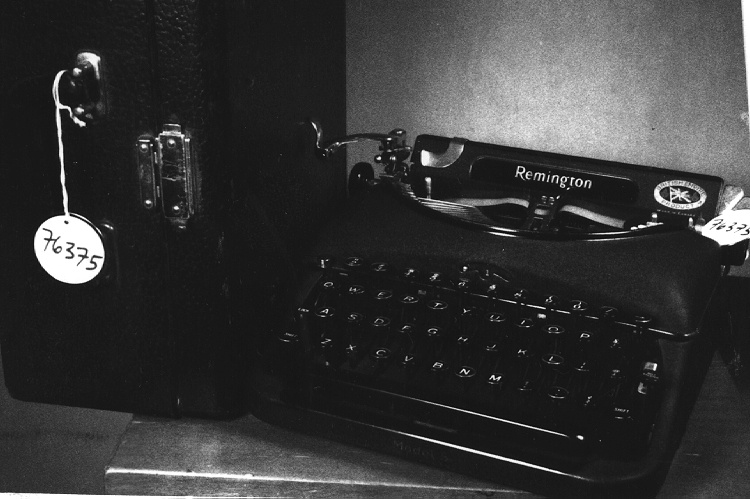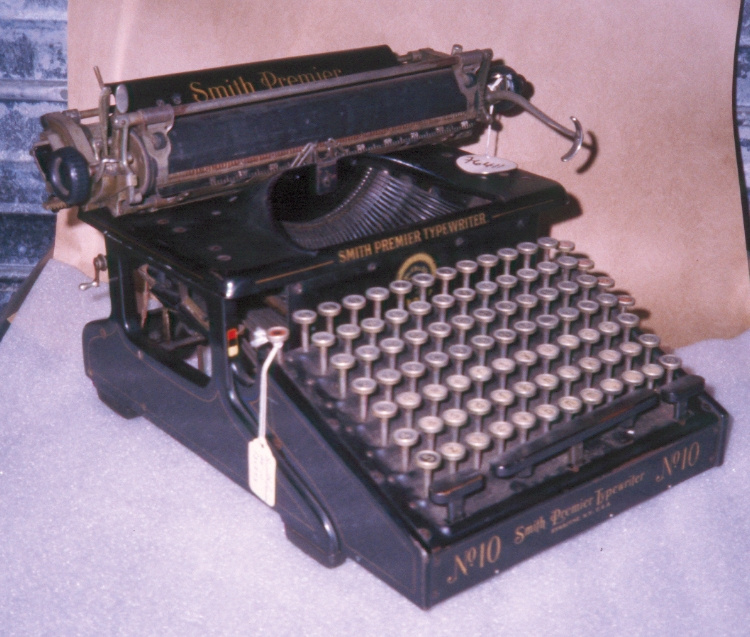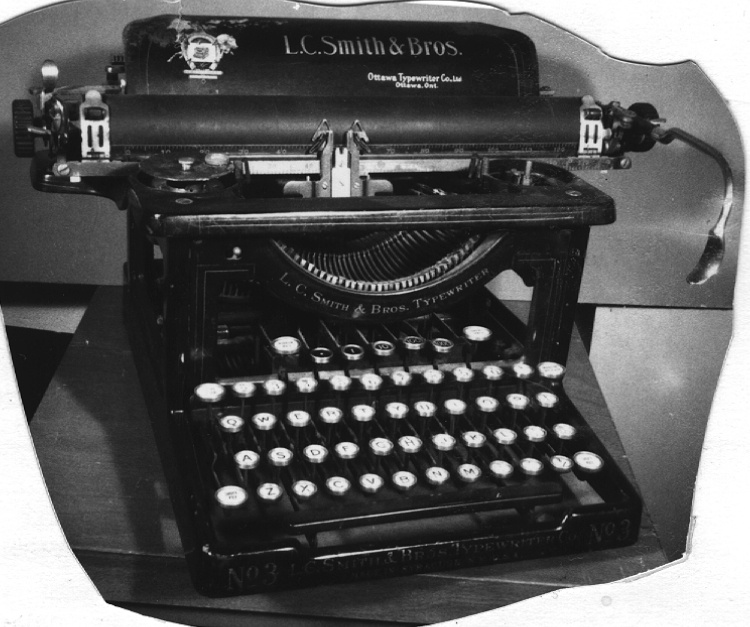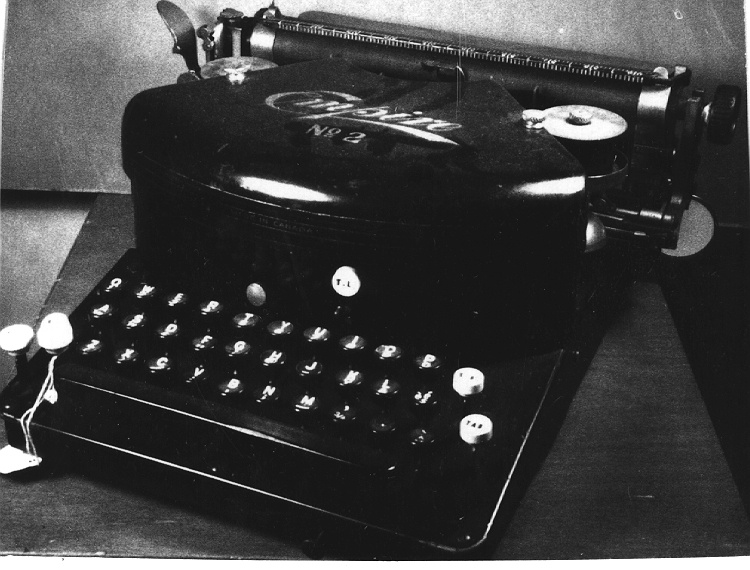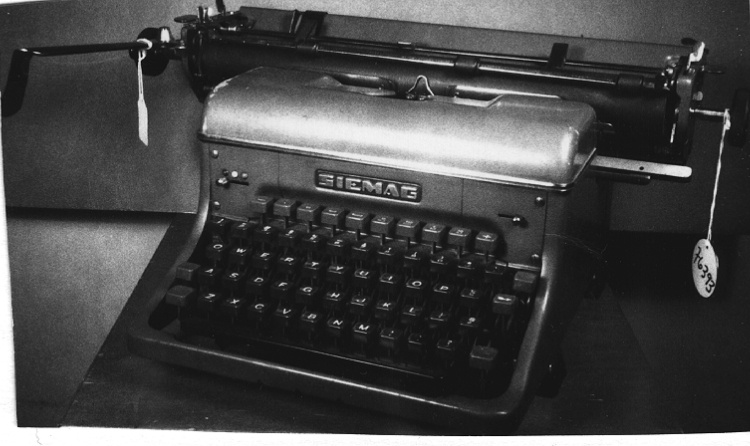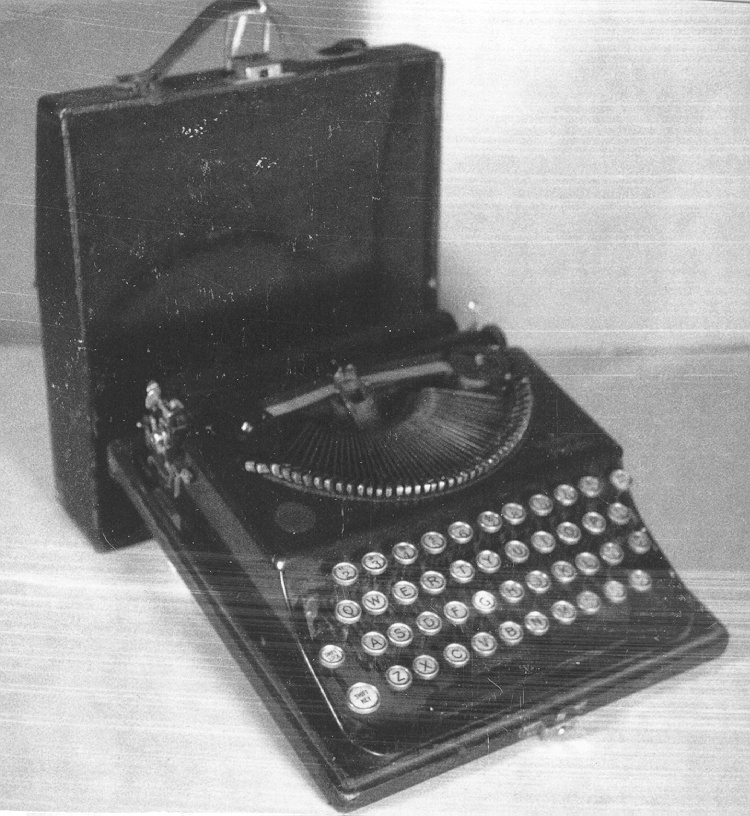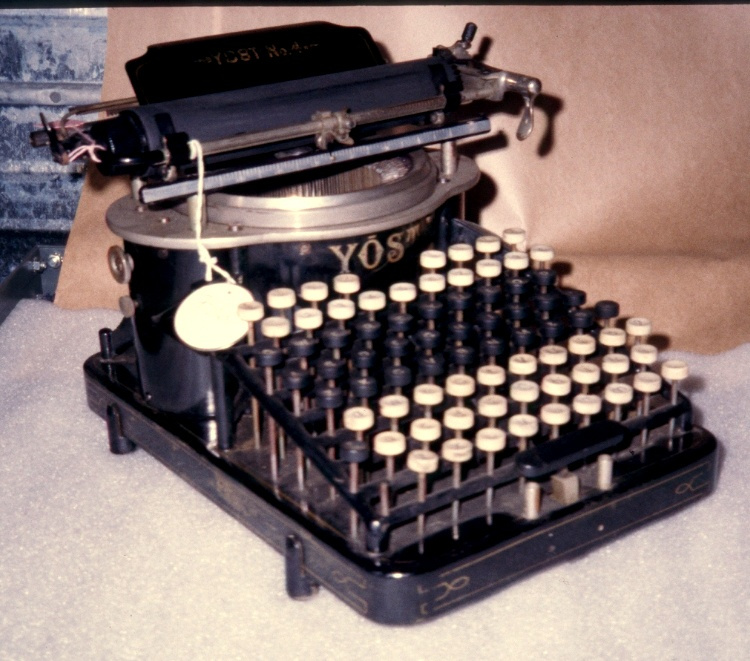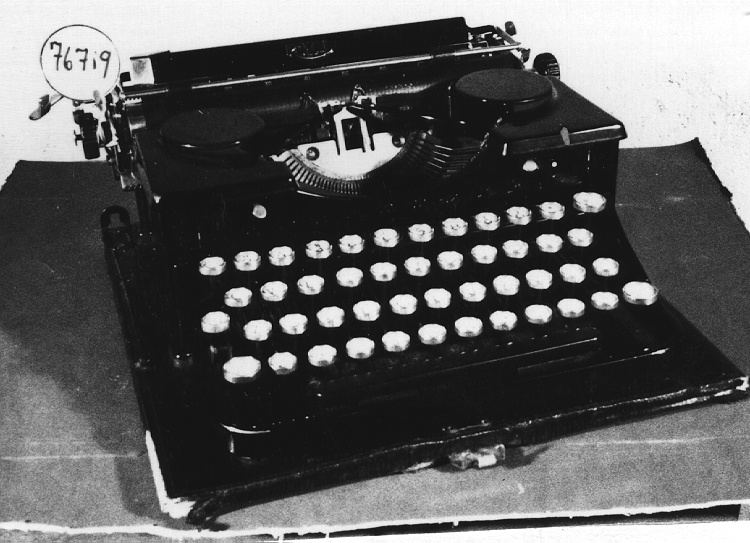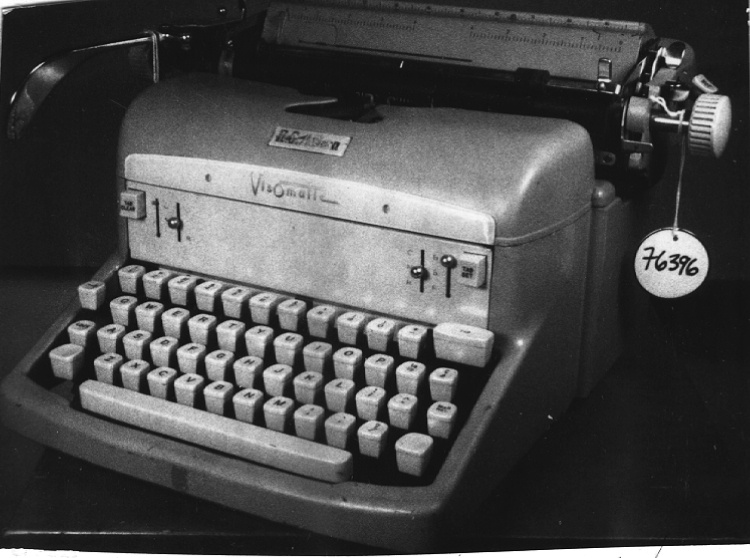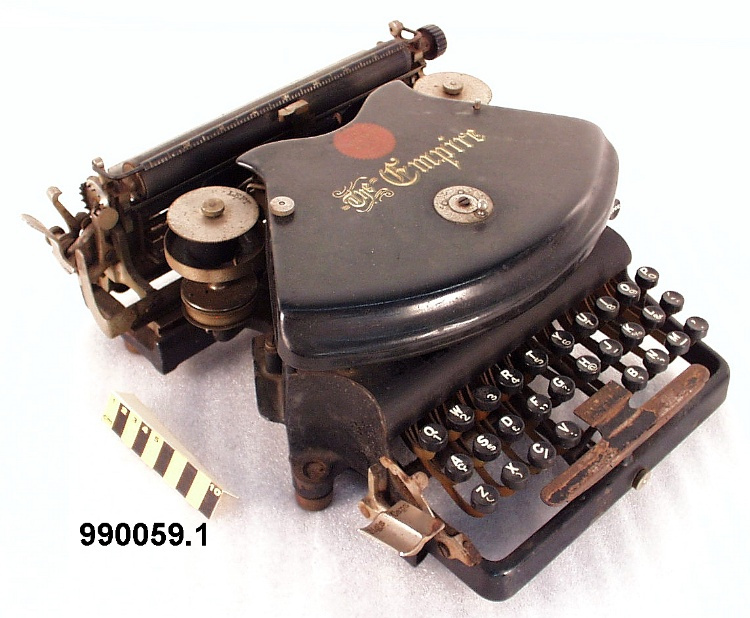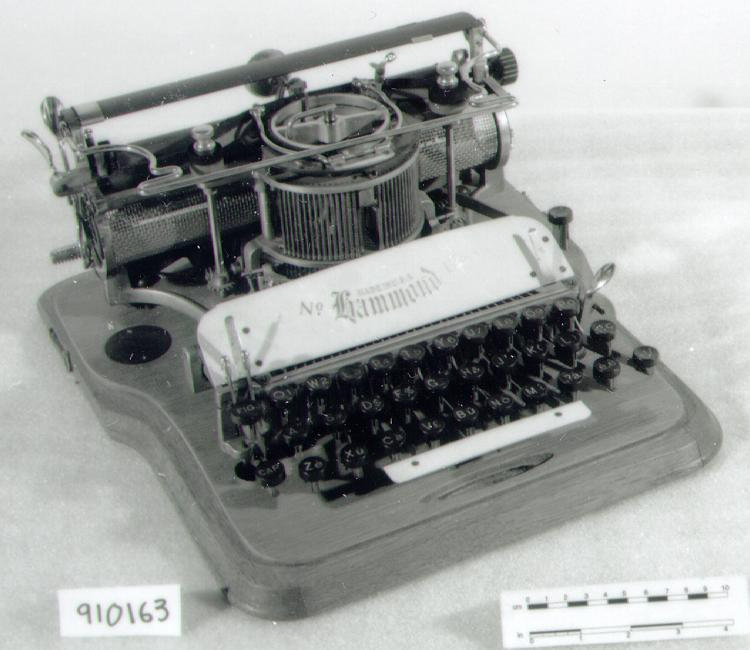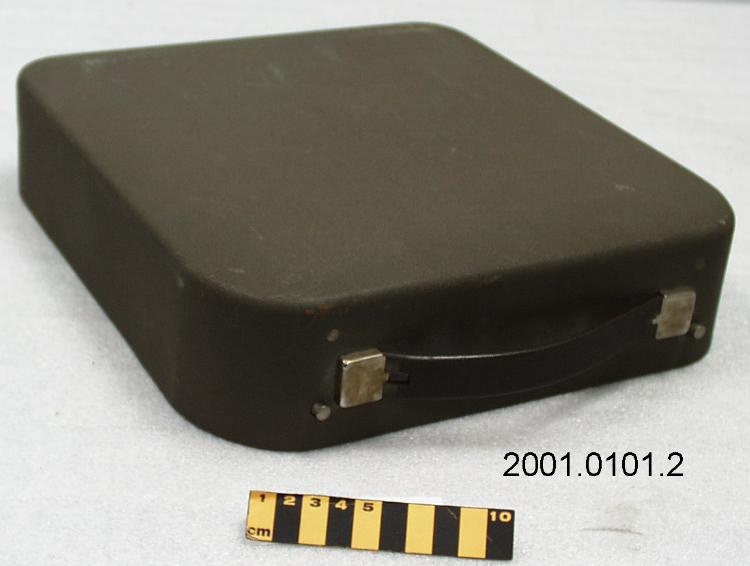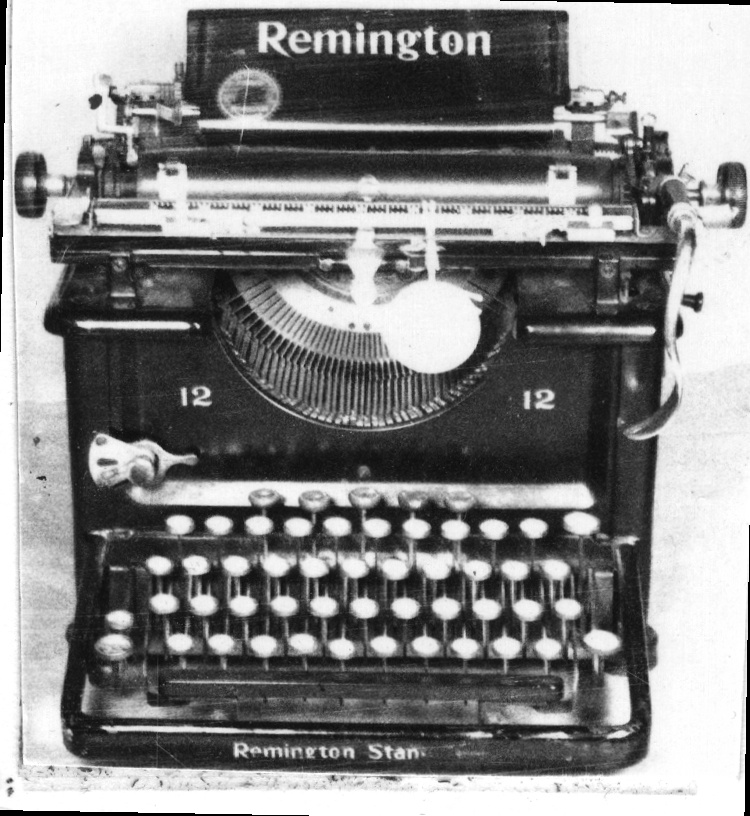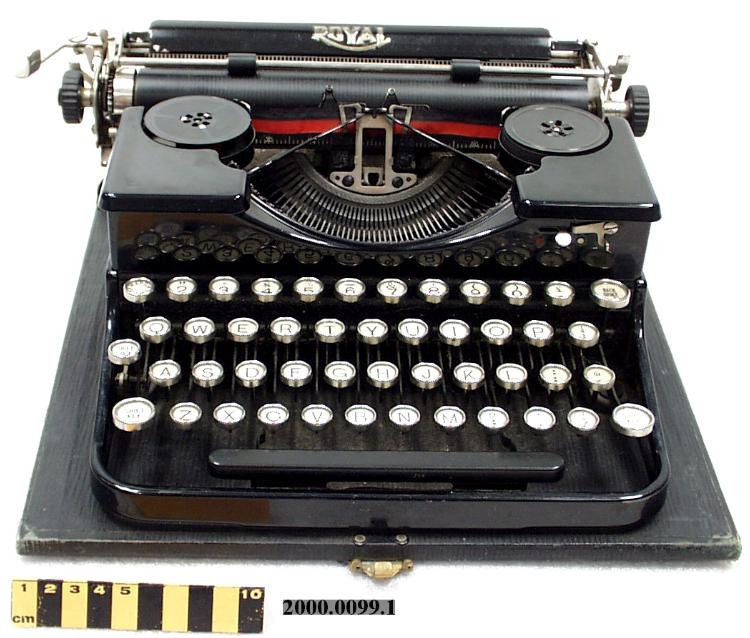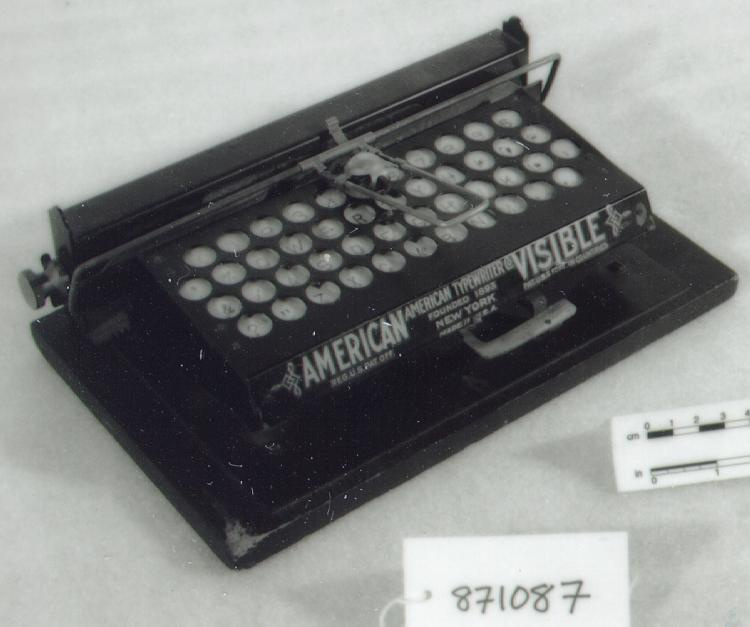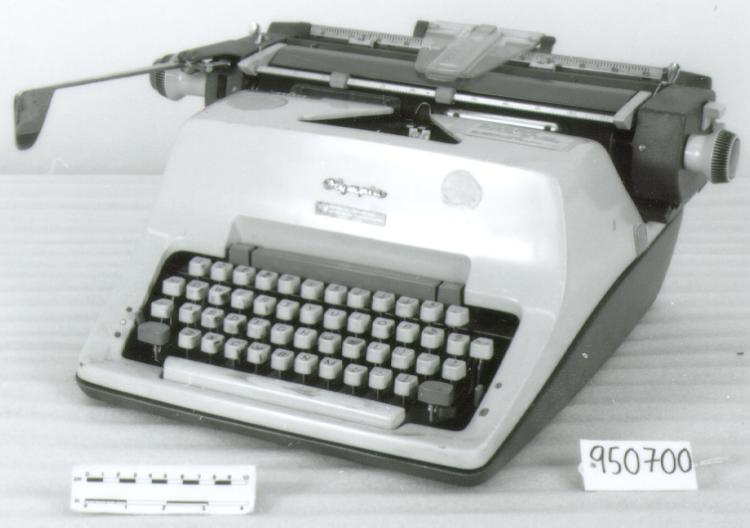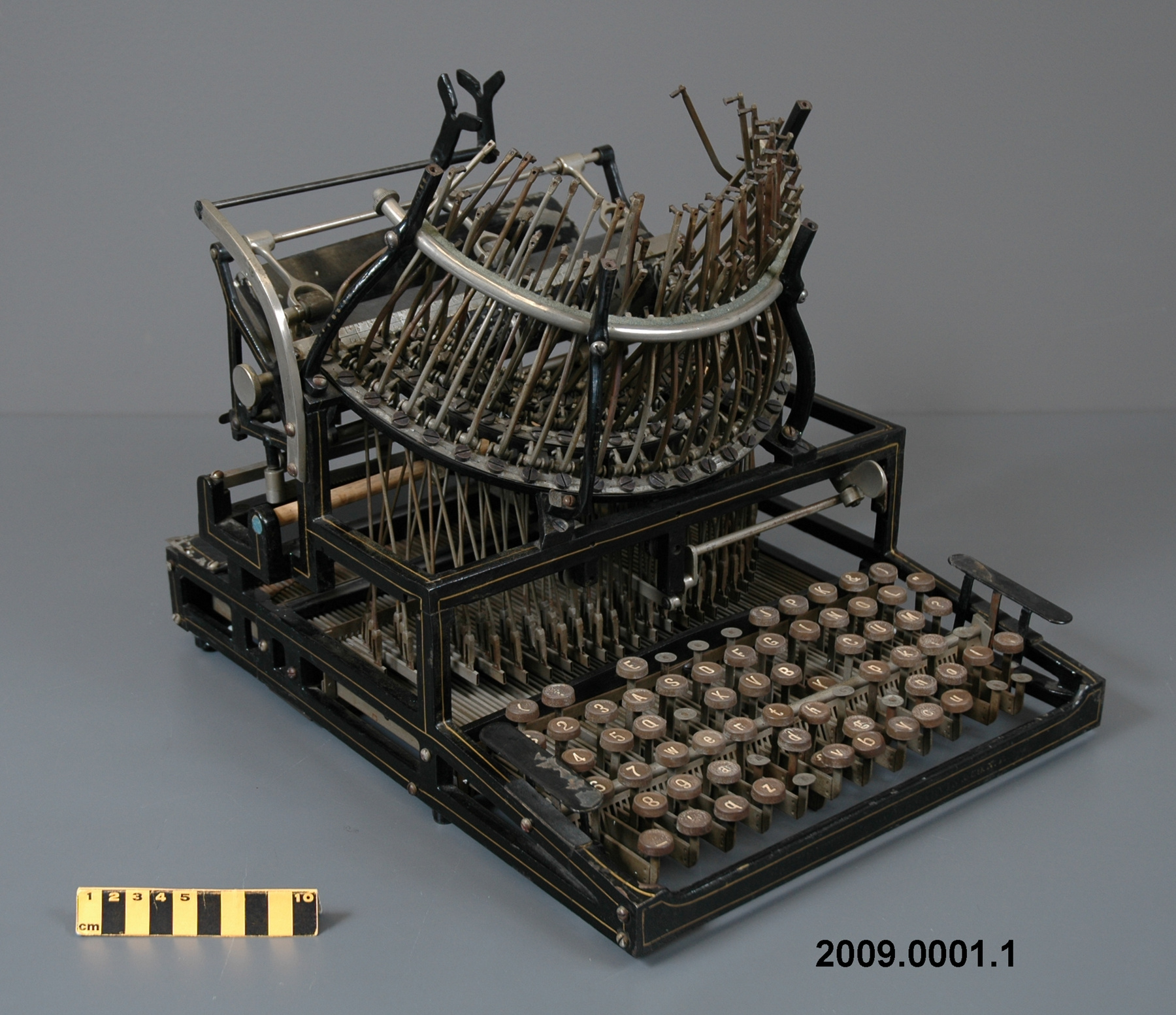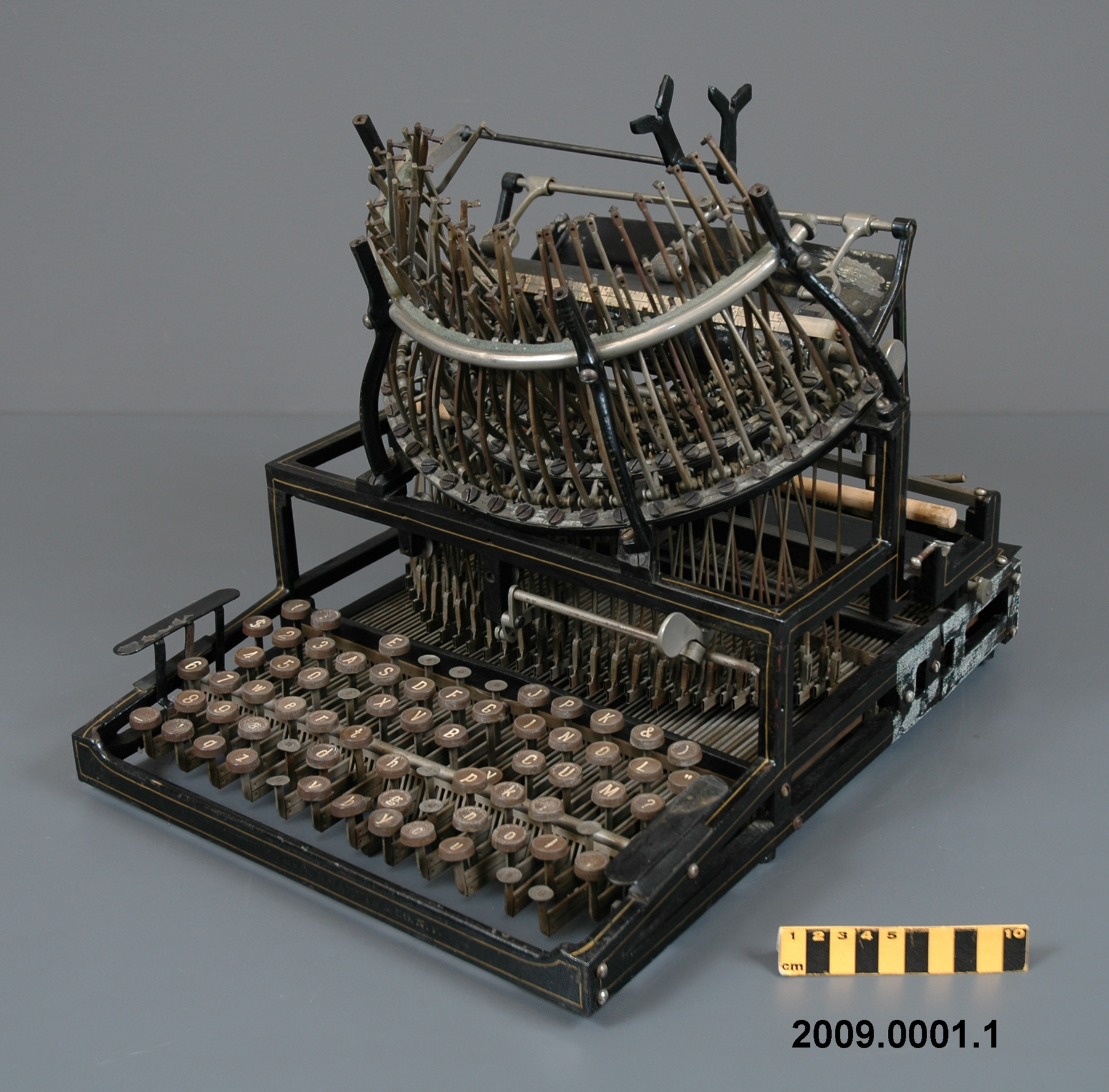Typewriter
Use this image
Can I reuse this image without permission? Yes
Object images on the Ingenium Collection’s portal have the following Creative Commons license:
Copyright Ingenium / CC BY-NC-ND (Attribution-NonCommercial 4.0 International (CC BY-NC 4.0)
ATTRIBUTE THIS IMAGE
Ingenium,
2009.0001.001
Permalink:
Ingenium is releasing this image under the Creative Commons licensing framework, and encourages downloading and reuse for non-commercial purposes. Please acknowledge Ingenium and cite the artifact number.
DOWNLOAD IMAGEPURCHASE THIS IMAGE
This image is free for non-commercial use.
For commercial use, please consult our Reproduction Fees and contact us to purchase the image.
- OBJECT TYPE
- type-bar/front-stroke/visible/manual
- DATE
- 1887
- ARTIFACT NUMBER
- 2009.0001.001
- MANUFACTURER
- Garvin, E.E. & Co.
- MODEL
- Improved Short Frame
- LOCATION
- New York, New York, United States of America
More Information
General Information
- Serial #
- N/A
- Part Number
- 1
- Total Parts
- 2
- AKA
- N/A
- Patents
- N/A
- General Description
- metal body, type bars,parts/ rubber? platen/ bakelite? parts
Dimensions
Note: These reflect the general size for storage and are not necessarily representative of the object's true dimensions.
- Length
- 39.0 cm
- Width
- 31.0 cm
- Height
- 29.0 cm
- Thickness
- N/A
- Weight
- N/A
- Diameter
- N/A
- Volume
- N/A
Lexicon
- Group
- Printing
- Category
- Typesetting
- Sub-Category
- N/A
Manufacturer
- AKA
- Garvin
- Country
- United States of America
- State/Province
- New York
- City
- New York
Context
- Country
- Unknown
- State/Province
- Unknown
- Period
- circa 1887 +
- Canada
-
This machine was devised and patented by a Canadian inventor Edward Elijah Horton (1847-1916) in 1883 (Canadian patent 22833). The typewriter visible stroke function is an important Canadian invention. The machine is very rare; there are only 5 or 6 existing Horton typewriters and apart from this example none are in Canada. This particular machine is one of possibly two Horton machines collected by Edson Moshier, a vice president of Smith-Corona of Syracuse, NY, and donated with the rest of the Smith Corona collection to the Onondaga Historical Association before 1987. Horton was a reporter and editor of the Globe and when he became a reporter (stenographer) in the provincial Court of Appeal in Toronto, he attempted to design a typewriter that would allow the operator to see what was being typed. In 1883 he secured in the United States the first patents for a visible-typing apparatus in which obliquely placed type-bars struck from the front. After securing the Canadian patent, in 1885 Horton and his reporter brother Albert incorporated the first Canadian company to manufacture typewriters, the Horton Typewriter Company, with its head office and factory in Toronto and a second factory in Buffalo, N.Y. In May 1887 the company was reorganized and the original machine was redesigned. In that year the brothers sold their American patents to a patent dealer, William Henry Cox. In 1891 they secured patent protection in England for their original machine and for some improvements. E.E. Horton was working on improvements to typewriters as late as 1898, when he secured a patent in the United States for an end-of-page indicator bell. Save for these patents and his brief foray into business, he remained a respected career stenographer in the Ontario courts. As well as inventing and manufacturing Canada's first, and only entirely Canadian, typewriter, Edward Horton had secured the first patents for a front-stroke machine that produced visible typing. His lasting impact was in placing machines on the market for others to see and emulate. His novel oblique, front-stroke configuration encouraged the development of what would evolve into the most successful typewriter design of the 20th century. [Ref. 1] - Function
-
A device which mechanically prints letters, numbers and selected symbols on a single sheet of paper, rapidly and uniformly. - Technical
-
The Horton typewriter was the first visible-typing machine of the type-bar design. This was one of the most important developments in the history of typewriters. Front-strike, visible-typing machines dominated typewriter design in the 20th century until the introduction of word processors and computers rendered the typewriter obsolete. Horton arrayed his type bars in front of the platen, so that the bars struck from the front, and he angled them obliquely toward the typist. The carriage on which the platen moved was positioned at the rear of the machine and raised. This arrangement of carriage and type bars allowed the typist to see the page as he/she was typing. This was one of the most important developments in the history of typewriters. The basic elements of the Horton typewriter design (front-strike type bars; reclined, oblique type basket; visible typing) were duplicated and gradually improved upon by other companies. Over time, they increased the incline of the type basket until eventually it was horizontal, as found in the Wagner (1893), the Underwood (1897) and most later type-bar machines. Horton's oblique front-strike design was revived in the Ideal typewriter (Germany, 1900) and in various portable machines from the 1920s onwards. This Horton typewriter was made by the E.E. Garvin & Co. from New York for the inventor Edward Elijah Horton, ca. 1887. This is a later model of the Horton typewriter, so-called "short-frame," or Improved model, measuring approx 12 x 15 inches. It was patented in the US, under patent no. 285,265. E.E. Garvin was established in New York ca 1866 as Smith & Garvin. It made tools, sewing machines, and possibly lathes. Around 1873 the company changed the name to E.E. Garvin & Co. and in late 1889 it was reorganized as Garvin Machine Co. In the 1880s the E.E. Garvin & Co. employed 125 workers; it produced machine tools and specialized in metalworking machinery. There is no indication in any advertising that the company manufactured typewriters; the Horton machines were most likely custom made for the inventor. - Area Notes
-
Unknown
Details
- Markings
- gold lettering along chassis front reads 'MANUFACTURED BY E.E. GARVIN & CO. N.Y.'/ white lettering on keys
- Missing
- an upper curved retaining bar at the top of the type-bar cage/ a ribbon holder and ribbon transport mechanism/ a front support rail for the carriage/ 11 key tops and 2 key posts 4 Key lever-type lever connectors
- Finish
- body painted glossy black/ black key posts and keys/ plated and metallic parts/ black platen
- Decoration
- gold striping on body
CITE THIS OBJECT
If you choose to share our information about this collection object, please cite:
Garvin, E.E. & Co., Typewriter, 1887, Artifact no. 2009.0001, Ingenium – Canada’s Museums of Science and Innovation, http://collections.ingeniumcanada.org/en/id/2009.0001.001/
FEEDBACK
Submit a question or comment about this artifact.
More Like This
